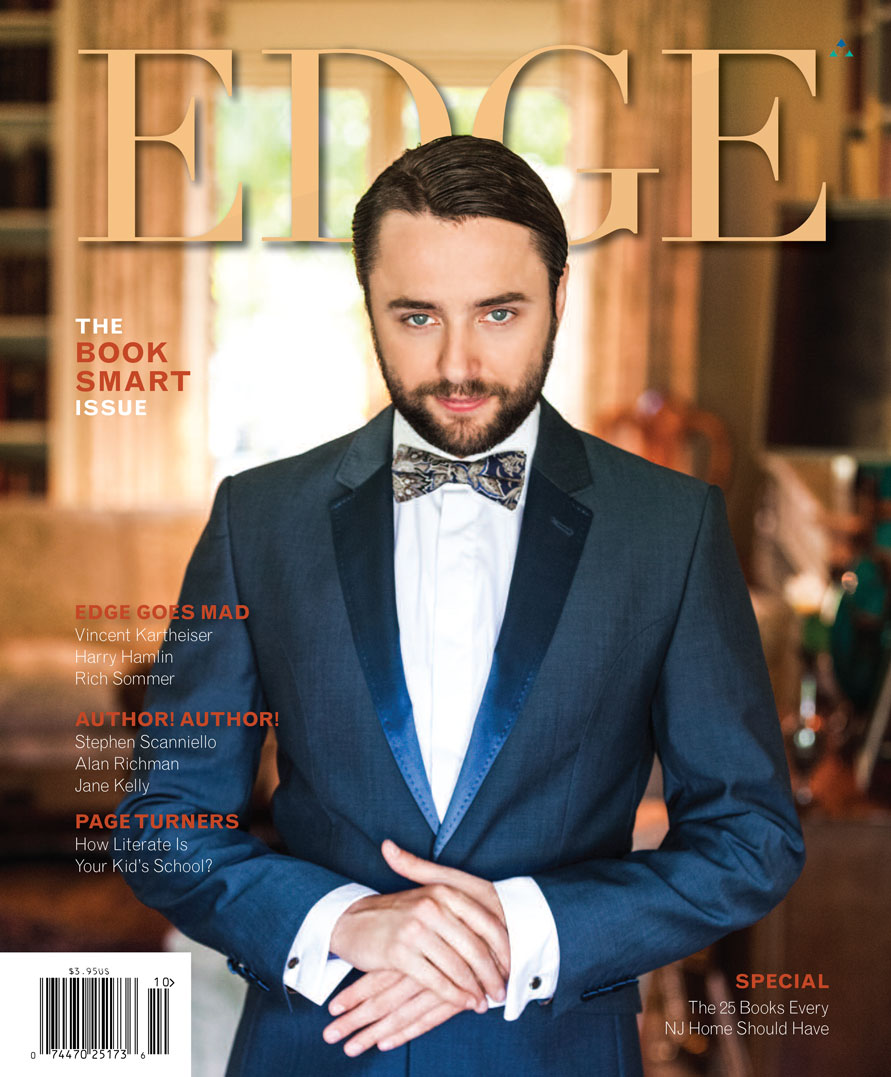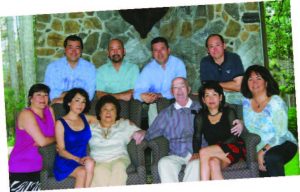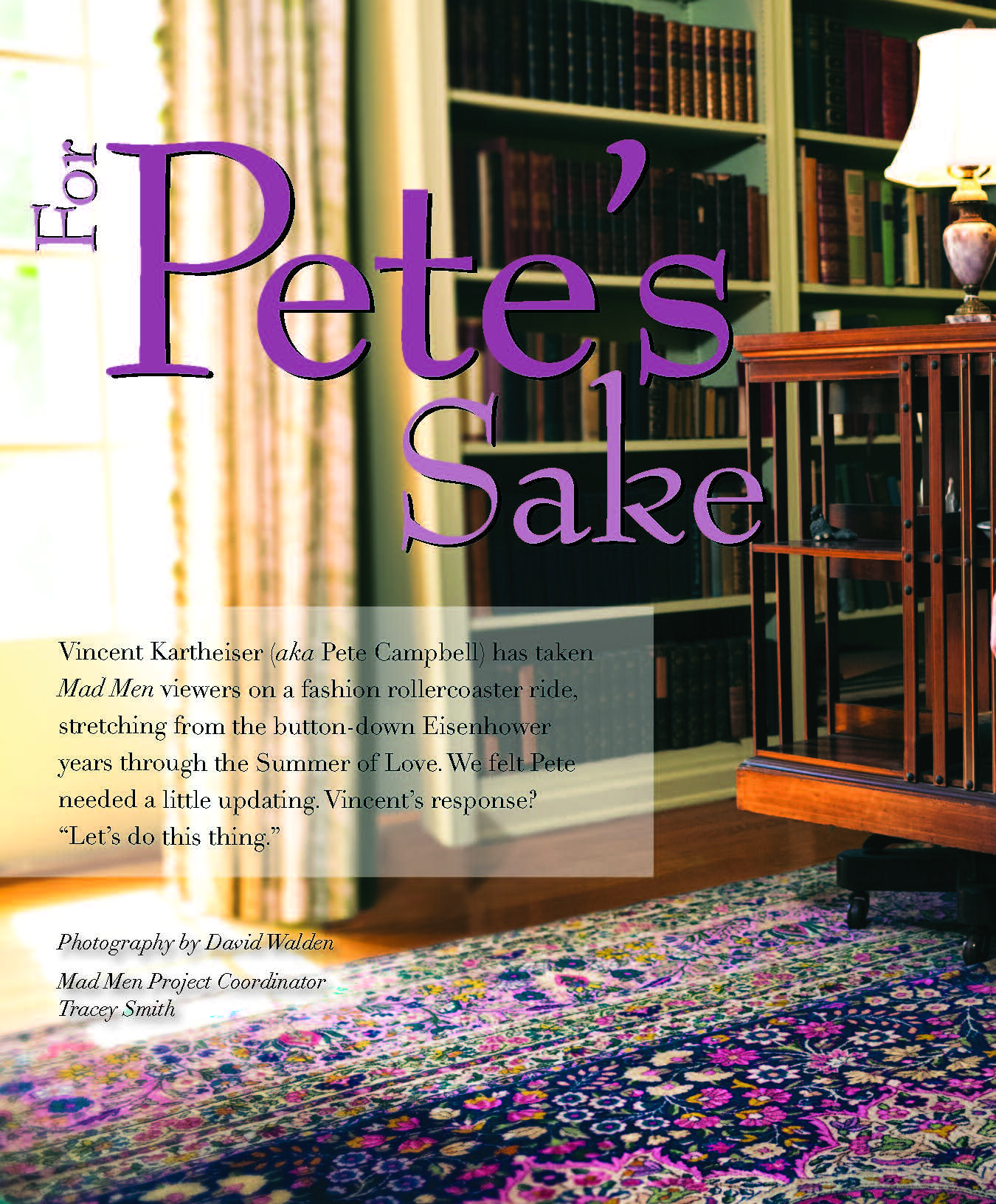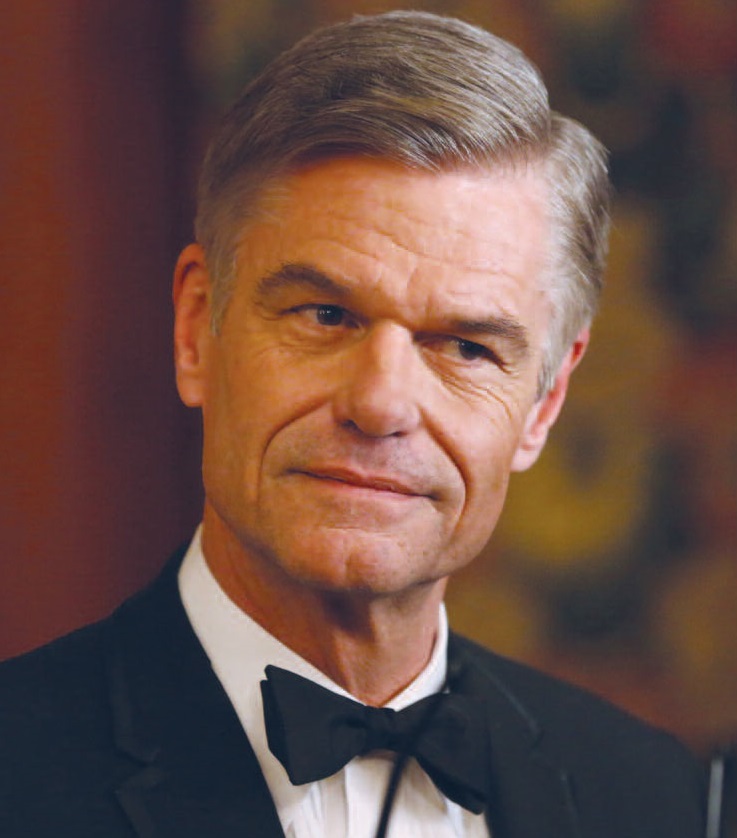When Jane Kelly is angry with people, she kills them.
That is just one of the many perks of being a mystery writer. “There was a person in my life who I disliked very much,” Jane Kelly says of her first book, authored in the mid-1990s. “So I killed him in a story. I found it to be a much safer, more legal way to vent my frustrations, and most importantly, I discovered that I really enjoyed writing.”
The author of the popular New Jersey Shore-based fiction series featuring sleuth and heroine Meg Daniels, Kelly will release the fourth installment of a series that includes Killing Time in Ocean City, Cape Mayhem, and Wrong Beach Island later this fall. That first book, for the record, never found a publisher. Nevertheless, Kelly (then in her 40s) didn’t give up. After a conversation with Tom Hogan, Sr., president of Medford-based Plexus Publishing, she was encouraged to try writing about something she knew a lot about. That’s when the focus of her next mystery became the Jersey Shore; Kelly had been vacationing at the beach from the age of five months, and has returned every year since.
“I was most familiar with Ocean City, so that’s where I started…and Killing Time in Ocean City was actually published,” she recalls. “But since bodies don’t wash up at the Jersey Shore every day, I thought it would be best to come up with mysteries for Meg to solve in other towns I knew and loved, like Cape May and Long Beach Island…and now Atlantic City.”
Kelly’s most recent novel isn’t entirely focused on casinos or gambling. She’s more inclined to sink $20 in video poker and go home than she is to drop hundreds of dollars at the tables. Instead, she infuses her work with other sources of personal inspiration. “I’m not a big gambler, but there is a part of me that always wanted to be a singer—even though I have no talent whatsoever,” she smiles. “So that’s why I made one of the main characters a frustrated lounge singer.”
In Missing You in Atlantic City, Meg is vacationing in Atlantic City while her boyfriend (recurring character Andy Beck) is busy working at his job in hotel casino security. She finds herself spending a lot less time with her toes in the sand than she had hoped when she decides to dig into a disappearance that occurred in the 1960s. The 50-year-old mystery revolves around a chance encounter with Johnny Boyle, a lounge singer and Frank Sinatra impersonator known as Johnny Angelini, and his long-lost mother, Betty Boyle, who went missing when he was an infant.
Like Kelly, Meg has always written from the perspective of a tourist at the Jersey Shore. As she listens to Johnny’s tragic tale, she vows to help him find out what happened to his mother once and for all. “My first thought was that, as someone who comes to visit the beach, you never expect anything bad to happen.” Kelly says. “Yet, somehow, Meg always knows how to find trouble. After three books, you’d think she would have figured that out by now.”
As Meg attempts to interview a tangled web of surviving witnesses in the mysterious disappearance of Betty Boyle—and ultimately reveals a twisted cover-up in the process—the story delves into the sordid world of politics in 1964, when the Democratic National Convention rolled into town and was held at Boardwalk Hall. “The reason Meg is so successful at what she does,” says Kelly, “ is that she really cares. She genuinely wants to help people, and she finds herself completely caught up in this story of the son who was left behind. My books are supposed to be light, fun beach reads. But they also have that additional emotion and depth regarding the crime itself.”
Prior to becoming an author, Kelly’s life didn’t have quite as much drama as her heroine’s. She graduated from Chestnut Hill College in Philadelphia, earned a Master’s of Science degree in information studies from Drexel University, and added a Master’s of Philosophy in Popular Literature from Trinity College at the University of Dublin. She went on to work in online information (“Before people even knew what the Internet was,” she says), consulting, and facilities management—in which she still has a day job, traveling to New York, Washington, DC, Chicago, Boston and other cities as part of her work.
Actually, it was when writing her graduate thesis on political fiction when Kelly first began researching the historical events that ultimately would set the stage for the plot of Missing You in Atlantic City. “I became completely fascinated with history, and started reading exclusively non-fiction about the early Cold War period,” she recalls. “That’s when I had the idea of having a crime that was committed in the past, and combining it with my memories of all my visits to Atlantic City growing up.”
Kelly did some sleuthing herself. Not only did she spend time wandering the boardwalk and casinos of Atlantic City, she took her research a step further and tracked down an assortment of people who had lived during that time. “I had a friend who actually went to hear Bobby Kennedy speak at the convention. Times were different back then, and I know Betty Boyle would have been able to do the same thing.”
Looking ahead, Kelly hopes to continue to be able to explore the past when it comes time to dream up her next mystery. “I like to learn about the history of the years that I’ve been alive,” she says. “You don’t have to live in Atlantic City or have grown up in the 1960s to know what was going on back then, and I think people will enjoy reading about something that was so important to our history and that happened right here in our backyard.”
 Meg Daniels will continue solving crimes, Kelly expects. However, there are plans in the works for new characters. Devising the complex plots in her novels almost comes naturally to Kelly now, but it’s her characters that make each book special. “If I were only concerned with plot, I’d be publishing books a lot more quickly,” she says. “The characters always end up taking on a life of their own…and if I can’t ‘hear’ them in m
Meg Daniels will continue solving crimes, Kelly expects. However, there are plans in the works for new characters. Devising the complex plots in her novels almost comes naturally to Kelly now, but it’s her characters that make each book special. “If I were only concerned with plot, I’d be publishing books a lot more quickly,” she says. “The characters always end up taking on a life of their own…and if I can’t ‘hear’ them in m
The 25 books all New Jerseyans should have in their homes
Am I missing something? How did being “book-smart” become a bad thing? More to the point, when did TV and the Internet become more reliable sources of ideas and information than a well-written, proofed and edited book? Honestly, sometimes I wonder if we’ve all become a little book-stupid. As a transplanted Manhattanite who put down roots in the Garden State more than three decades ago, I made it my mission to learn as much as I could about New Jersey as quickly as possible. Thirty-one years later, I am still turning pages (and keeping my local Barnes & Noble afloat) with no end in sight.
Where all of that reading has gotten me is to the realization that New Jersey is a land of multiple personalities and myriad identities. The deeper one drills down into the history or the culture or the literary heritage of the state, the more utterly new and fascinating stories begin to reveal themselves. I was probably in my 40s when it finally dawned on me that I would never be able to synthesize all of the information trapped in the 200 or so books (now 300 or so) I owned that are relevant to New Jersey.
Not long ago, I was discussing this very point with a visitor to my home—a relatively recent transplant in the Garden State. How, he asked, would I characterize exactly what it means to be a New Jerseyan? Well, I replied, you won’t find your answer online. It’s somewhere on these bookshelves. Then he asked the better question: Which 25 would you pull off the shelves to get me started?
I was amazed how quickly I was able to narrow down my collection. What I ended up with was a mix of works covering history, culture and fiction—most of them recently published, some very well known, a few not. You may find my Top 25 light on dirty politics, organized crime, pollution, gambling and diners—five themes that certainly have generated their fair share of books—but hey, this is my list. Go make your own!
No, really. Pick your own Top 25. In fact, I hope you get to the end of this story and disagree with at least half of my choices. Because, truth be told, that’s what being book-smart is all about. Happy hunting!
1609: A Country That Was Never Lost
History • Kevin Wright • 2009
Forget everything you learned in school about the Lenni-Lenape. Kevin Wright unearthed original documents from the 1600s and 1700s for 1609, which repaints the picture of colonial New Jersey in some eye-opening ways.
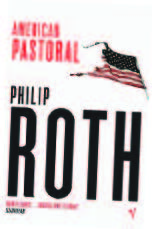 American Pastoral
American Pastoral
Fiction • Philip Roth • 1997
Roth’s novels are very New Jersey-centric, so any of his award-winning books technically could make this list. American Pastoral focuses on the tumultuous life of a former athletic star modeled on Newark’s legendary Swede Masin.
Are You There God? It’s Me, Margaret
Young Adult Fiction • Judy Blume • 1970
Margaret is a sixth grader who moves from New York City to the New Jersey suburbs, where she begins an unforgettable search for spiritual answers. Is there a girl under the age of 50 who hasn’t read this book?
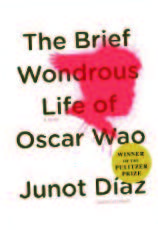 The Brief Wondrous Life of Oscar Wao
The Brief Wondrous Life of Oscar Wao
Fiction • Junot Diaz • 2007
Much of this Pulitzer-winning novel is set in the Dominican Republic, but the central character, Oscar, is a Paterson teenager trying to balance love, life and a sci-fi obsession with his family heritage.
 Bruce
Bruce
Biography • Peter Ames Carlin • 2012
EDGE interviewed Peter right after his Springsteen bio came out, and it has since been heralded as the “Best on Bruce” by his legion of fans.
Eddie and the Cruisers
Fiction • P.F. Kluge • 1980
This novel, set in South Jersey during the early 1960s, has been called the Citizen Kane of rock & roll. No argument here. The movie was very good; the book is even better.
Encyclopedia of New Jersey
Reference • Marc Mappen • 2004
Keep this 900-plus-page book within reach at all times. Though a decade out of date, it still provides a superb starting point for virtually anything you need to know about the Garden State. Mappen’s books and newspaper pieces on Jersey culture and history are legendary.
Freedom Not Far Distant
History • Clement Price • 1980
A scholarly work on the African-American experience in New Jersey by the Rutgers U. professor who was recently named City Historian of Newark.
Howl and Other Poems
Poetry • Allen Ginsburg • 1956
This collection includes Ginsburg’s two best-known poems, Howl and A Supermarket in California. Though not specifically tied to New Jersey—and more famous for its influence on the Beat Generation—this book presents the Newark-born poet at the height of his literary powers…and was just too hard to put back on the bookshelf once I pulled it off.
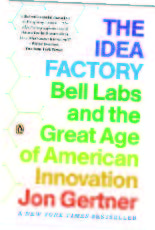 The Idea Factory: Bell Labs and the Great Age of American Innovation
The Idea Factory: Bell Labs and the Great Age of American Innovation
Non-Fiction • John Gertner • 2013
I have come to know many now-retired scientists who worked at Bell Labs. What they accomplished—and how they attacked the problem-solving process—is truly humbling. I couldn’t wait to get my hands on this book.
 Independence Day
Independence Day
Fiction • Richard Ford • 1995
No, it’s not a book about an alien invasion. Independence Day is one of Ford’s three novels staring New Jersey real estate agent Frank Bascombe. Each is a Faulkner-esque masterpiece in its own right, but this book won a Pulitzer, so it’s the one I’m going with.
Jernigan
Fiction • David Gates • 1991
As first novels go, this one by David Gates is nearly un-improvable. Central character Peter Jernigan sounds like an adult version of Holden Caulfield, with suburban New Jersey as a backdrop.
The Jersey Game: The History of Modern Baseball from Its Birth to the Big Leagues in the Garden State
Sports • James Di Clercio • 1993
Truth be told, I have yet to discover a great, scholarly book covering the history of New Jersey sports. This one makes the list for its sharp focus on baseball in the 19th century.
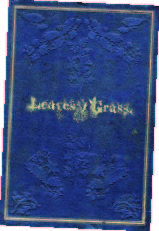 Leaves of Grass
Leaves of Grass
Poetry • Walt Whitman • 1891
Whitman actually published the first collection of his writing under this title in 1855. He constantly reworked the poems and kept adding more until the final version, published prior to his passing in Camden in 1892. He had moved to the Garden State in the 1870s. Leaves of Grass praises the wonders of nature and the human spirit.
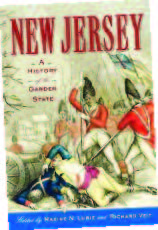 New Jersey: A History of the Garden State
New Jersey: A History of the Garden State
History • Maxine Lurie & Richard Veit, Editors • 2012
As essay collections go, this is the one I now reach for when I need to bone up on my regional history. It is structured chronologically and features an introduction by Marc Mappen.
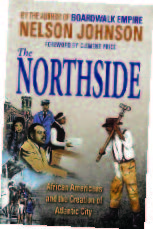 The North Side: African Americans and the Creation of Atlantic City
The North Side: African Americans and the Creation of Atlantic City
History • Nelson Johnson • 2010
We all know what happened to Johnson’s earlier book, Boardwalk Empire. I pick this one, however, because it presents a side of the same story that was underexplored in the HBO series.
Past and Promise: Lives of New Jersey Women
History • Joan Burstyn • 1997
This work of collective biography does an excellent job of highlighting the achievements and contributions of New Jersey women from colonial times up through the late 20th century. I’d love to see a second, updated edition.
 Paterson
Paterson
Poetry • William Carlos Williams • 1963
Williams began publishing his poems about Paterson in the years after World War II. They were finally collected in a 1963 volume. Williams approached his subject as a reporter might, and then transformed his research into a sometimes-eccentric new form of American poetry.
The Pine Barrens
Non-Fiction • John McPhee • 1968
This book was originally published as nine articles in The New Yorker. It is an incredible snapshot of an untouched wilderness in the shadow of two major urban centers. If you are trying to decide which book on this list you should read first, strongly consider McPhee’s.
Rebellion In Newark
Non-Fiction • Tom Hayden • 1967
Were the infamous Newark Riots riots at all? Hayden’s detailed account of the events leading up to and during the six days of murder and mayhem still stands up after all these years—and raises a number of troubling questions about New Jersey’s darkest hour.
This Is New Jersey
History • John Cunningham • 2012
Some version of this book was probably your textbook in 4th or 5th Grade. Cunningham was the state’s unofficial popular historian for nearly seven decades from the 1940s until his passing in 2012.
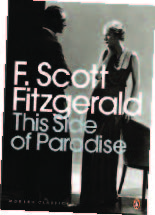 This Side of Paradise
This Side of Paradise
Fiction • F. Scott Fitzgerald • 1920
The heck with The Great Gatsby. This was the novel that catapulted Fitzgerald into the post-WWI literary scene. The story of Amory Blaine (a thinly disguised F. Scott) explores love, greed and social climbing among the Princeton elite. The initial printing sold out in three days.
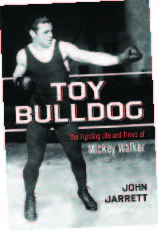 Toy Bulldog: The Fighting Life and Times of Mickey Walker
Toy Bulldog: The Fighting Life and Times of Mickey Walker
Biography • John Jarrett • 2013
The story of boxing in New Jersey intersects with so many other themes that I had to include one book on the sport. Mickey Walker wins a split decision over the better-known Jimmy Braddock story, Cinderella Man. Though both stories are compelling, Walker’s takes place during the Prohibition Era and is far more colorful.
Weird N.J.
Non-Fiction • Mark Moran & Mark Sceurman • 2003
You’ve probably come across the magazine created by these two guys a million times. Their first book hit the stores a little over a decade ago. If you ever have a hankering to root around abandoned psychiatric hospitals and the like, consider this your travel guide.
A Woman’s Crusade: Alice Paul and the Battle
for the Ballot
Biography • Mary Walton • 2010
After more than a half-century of steady-but-slow progress by the women’s suffrage movement, New Jersey’s Alice Paul rolled up her sleeves and finished the job by employing an out-of-the-box brand of civil disobedience that forever changed the way Americans stand up to their own government.
Editor’s Note: Mark Stewart has authored six books on his adopted home state, all published by The Heinemann Library, as well as a history of the New Jersey Devils. None made the cut. Which book just missed squeezing into the list? “Number 26” was the 2001 suspense novel set in Spring Lake, On the Street Where You Live, by Mary Higgins Clark. Anyone who’s thinking of digging a backyard swimming pool might first want to check out this supernatural cautionary tale!
The Cover Story
(76) Houghton Mifflin; (77) Riverhead Books; Touchstone Publishing; (78) Penguin Books; Alfred A. Knopf; (79) Upper Case; Rutgers University Press; Plexus Publishing; (80) New Directions; Scribner Publishing; (81) McFarland & Company.
According to leading New Jersey educators, the case for a challenging literature curriculum is open-and-shut.
A couple of months ago, I convened five of my old school girlfriends during our annual reunion to discuss our all-time favorite middle-school (we called it “junior high” back then) Summer Reading List titles. There was an immediate consensus about Catcher in the Rye, To Kill a Mockingbird, and The Heart is a Lonely Hunter. These novels represented our first foray into more serious, more adult fiction, offering themes of rebellious angst, social injustice, and seemingly insurmountable challenges. We also agreed that, as parents (and now grandparents), we were all too familiar with the moaning and groaning of subsequent generations when presented with the dreaded list. Perhaps it’s overscheduling or shorter vacations or digital distractions, but it seems as if the “I can’t wait to read it” treasures of our early teens have become the “Do I have to read it?” chores for a lot of kids today.

www.thinkstockphotos.com
For generations the great literary safety net has been supplied by our schools. Whether reading comes naturally to a student or is a bit of a forced march, every child is exposed to the enlightening qualities of a great book sometime in the vicinity of 6th Grade, and in most systems the rubber meets the road in 7th. By high school, kids have been introduced to literature in a meaningful way; they get why reading matters. For some it sticks, for others it doesn’t.
The responsibility of educators is to inspire their students to read. (It’s up to authors to keep readers reading.) Some school systems in New Jersey do a magnificent job. Others have become less demanding of their students, and even of their teachers. In assessing the relative merits of a child’s educational options, parents would be wise to ask questions about how great literature fits into a school’s overall philosophy. We put this question to a number of top schools in the Garden State.
“The job of a teacher is not just to find the right book, but to start a student on a lifetime of reading pleasure.”
—Dr. Peter Lewis • Head of School The Winston School • Short Hills
Dr. Lewis defines the basic literacy goal for all students as “getting pleasure out of print,” adding that “with literature, we need to find a theme that will spark interest—but first we need to provide the techniques and strategy to decode the words, starting in the lower grades.” At Winston, non-fiction is typically factored in during the Middle School grades. Often the hero is a very ordinary human being who rises to meet and overcome challenges. For example, Mountains Beyond Mountains, by Tracy Kidder, is a book about Dr. Paul Farmer and his inspiring quest to cure infectious diseases around the world.
Be it fiction or non-fiction, Dr. Lewis believes that, from an academic perspective, all literature is still fundamentally “text,” and the challenge is to keep students enraptured by the written word rather than put off by the hurdles of decoding them. That effort includes booking author visits to add a living component to the books students are reading. On a school trip to see Orlando Bloom in Romeo and Juliet on Broadway, Bloom met with Winston students and explained that although he had been dyslexic as a child, he had managed to overcome his early challenges to pursue and achieve his lifelong dream of becoming a modern-day Shakespearean actor. Dr. Lewis used the opportunity to emphasize to his students that “Just because it’s hard to do, doesn’t mean you can’t do it.”
“Avid readers make awesome writers.”
—Mary Schoendorf • Middle School Literature Coordinator St. Bartholomew Academy • Scotch Plains
The kids at St. Bartholomew are in a “trilogy mode,” particularly by authors Suzanne Collins (The Hunger Games) and Veronica Roth (Divergent). Schoendorf has noticed that this popular reading genre has been influencing her students’ writing, which is immensely gratifying. Middle schoolers she notes, tend to be a bit unfocused in their writing. Often her role is to help fine-tune their efforts and come more quickly to the point they want to make.
To inspire her students’ interest in literature, Schoendorf regularly offers video clips about the authors to help bring them to life. She also insists on “web quests,” where students are required to research the author’s life and time—all before they even open the book. “This way,” she points out, “the book itself becomes the reward…and one that they can’t wait to start reading.”
Schoendorf also tries to nudge them out of their literary comfort zone into other genres (e.g., the classics). In doing so, she assesses class profiles in order to determine the most appropriate literature for the grade level, beginning with what she believes a class can emotionally handle. For example, she would ordinarily avoid Edgar Allan Poe, at least until the 7th Grade. For her 6th Graders, she might substitute The Hatchet, a young-adult wilderness survival novel by Gary Paulsen—an adventure story that is not as dark as Poe’s work, but offers all the same basic literary suspense elements. Recently, Schoendorf successfully introduced the 7th Graders to The Wednesday Wars, by Gary Schmidt—a coming-of-age story about a 7th grader. Her students were so impressed by the protagonist’s interest in Shakespeare that they asked for a Shakespeare unit in their own classroom, which is now known as Shakespeare Wednesdays. In fact, they even volunteered to give up half their recess for more class time with the Bard…which only proves her favorite point: “Get them interested, and they’ll bite.”
“Many of the most popular books fall into the category of dystopian literature, where the person who saves the world is a young adult.”
—Barbara Dellanno • Dean of Academic and Faith Formation Union Catholic High School • Scotch Plains
Dellanno, who doubles as Union Catholic’s Humanities Curriculum Specialist, sees the goal of both parents and teachers when it comes to young adult literature as “getting them hooked on reading for pleasure.” Her opinion about much of the YAL being written today is that it does just that. In fact, she admits to getting hooked herself on such contemporary classics as the Harry Potter series. Dellanno also believes it’s a positive for young readers to form their own tastes and reading habits. “I think that it is important that teachers and parents allow them to choose what they want to read,” she says, adding that there’s no harm in an occasional comic book or sports magazine.
The point is to get them reading and, once they develop the habit, they are more easily encouraged to branch out into serious literature, even the classics. Not surprisingly, Dellanno gives a thumbs-up to trending series literature, such as The Hunger Games, Twilight, Maze Runner, Divergent, Gone, and Park Service. As for singular novels, she favors The Book Thief and Wonder, as well as novels like Fahrenheit 451 and Persepolis. As for popular authors, continued on page 68 she lists Jerry Spinelli, Walter Dean Myers (a recently deceased resident of Jersey City), Sarah Dressen (for girls), and Elizabeth Wein (for historical fiction). “Dystopian-themed novels,” Dellanno notes, “are empowering and reflect a way for the younger generation to cope in a healthy way with our post-9/11 world.”
When asked why To Kill a Mockingbird seems to top everyone’s list of Middle School classics, Dellanno explains that it is a great tool to teach the important elements of fiction (setting, point of view, foreshadowing and symbolism), and that the 1962 film starring Gregory Peck enables students to compare and contrast great writing and great filmmaking techniques. “Also, the essential questions raised by the novel grip students and make them think and want to discuss what they have read with one another,” she says. The 1960 novel by Harper Lee happens to be Dellanno’s all-time favorite.
“The classics speak to the human condition and teach lessons about life to which all people can relate.”
—Dr. Martine Gubernat • Chair of English Department St. Joseph High School • Metuchen
The freshmen boys at St. Joe’s dive right into great literature in English I, including short stories, nonfiction, drama, novels, mythology and poetry. During a typical year, they’ll digest Shakespeare’s Julius Caesar, Inherit the Wind and The Call of the Wild. This sets the stage for English II, which focuses on American literature; English III, which transports young readers across the ocean for a year of British lit.; and finally to English IV and AP classes that feature challenging selections of world literature.
According to Dr. Gubernat, classic literature is at the heart of the English curriculum all four years. “The classics,” she says, “help readers to consider the impact of events—both large and small, positive and negative—on ordinary people.” The “noble language” of the classics, she adds, serves as the basis for student analysis and evaluation of the written word.
“The written language is still king.”
—Whitney Slade • Head of School
The Rumson Country Day School • Rumson

www.thinkstockphotos.com
The 2014–15 school year will be Slade’s first at RCDS, an independent K–8 school in Monmouth County with a strong historical commitment to fostering an appreciation of literature. The nature of how great writing is delivered, he notes, is changing…and with change comes trepidation on the part of parents and educators. “With the advent of the Internet and social media there is fear—real or imagined—that students will be distracted from reading and the joys of literature,” he says.
Slade believes that it is incumbent upon teachers, parents and caregivers to foster reading whenever possible. However, it needs to be on the young person’s terms. Whether reading an online version of a novel or a well-written publication, engaging in a worthy blog, or simply making a monthly visit to the bookstore, exposure is key. The form it comes in, he insists, should be irrelevant. “Good writing is as important as ever in binding us together, sharing a common history, fostering creativity, and developing skills for an unpredictable workplace,” Slade says.
“Books can evolve with you and your understanding of them can evolve, too…that’s just one wonderful thing about my job.”
—Lou Scerra • English Department Chair Newark Academy • Livingston
At first glance, the literary spread between 6th and 12th Grades at Newark Academy seems extremely ambitious. The 6th Graders are reading A Midsummer Night’s Dream and Nothing But the Truth, a novel about a boy suspended for humming the national anthem. The seniors are tackling

www.thinkstockphotos.com
Alison Bechdel’s 2006 graphic memoir, Fun Home, Junot Diaz’s Pulitzer-winning 2008 novel The Brief Wondrous Life of Oscar Wao, Virginia Woolf’s 1925 Mrs. Dalloway, and the playwright Tom Stoppard’s Arcadia. In between, students are introduced to Harper Lee, F. Scott Fitzgerald, Walt Whitman, Toni Morrison and John Green.
Serra, who heads the school’s literature-based English Department, points out that much of the literature he assigns is driven by story and character. He meticulously selects texts that are developmentally appropriate in terms of form and content, saying, “I’d like to think we have a nice blend of traditional classics and contemporary literature that all speak to the concerns of the 21st century world. We’re always eager to add new texts into the curriculum and we also try to listen to student input.”
Serra’s personal favorite is The Great Gatsby—the subject, as it happens, of his undergraduate thesis. Interestingly, he credits his sophomores with having helped him to “see the characters, the story, and the novel itself in a new way.”
Inside the Numbers
The U.S. publishing world generated $27.01 billion in net revenue in 2013, selling 2.59 billion units according to a recent report from the Association of American Publishers and BISG (Book Industry Study Group). A large chunk of that business is attributable to YAL. In December of last year, a report on CBS News indicated YAL sales were up 24 percent since 2010, making it the fastest-growing publishing market sector. Long overlooked by the big publishers, these books have actually become popular with adults, too; the report estimated that about 80 percent of YAL buyers are over 18…and not all of them are buying for kids.

www.thinkstockphotos.com
In terms of embracing non-paper delivery methods, the news is also positive. An article in New York Magazine last year entitled “YAL by the Numbers” showed that, in 2002, fewer than 5,000 YA titles were published—of which only 143 were ebooks. By 2012, the number of titles had more than doubled over 10,000, of which 40 percent were of the ebook variety.
Good literature comes in many shapes and sizes—from traditionally leather-bound library tomes to dog-eared and page-worn paperbacks to the latest palm-held backlit digital readers. There are some among us who would never trade that special feeling that comes from physically opening a “real” book and thumbing through it page-by-page. On the other hand, the popularity of audio and ebooks, whether delivered to a Kindle, a Nook, or some other experience-enhancing device, has expanded exponentially, especially among the younger generation. Whatever or however a person prefers to read, it is the actual commitment to read that really matters. And for that we count on our educators—more heavily now than ever.
 SO YOU WANT TO WRITE A YOUNG ADULT BEST-SELLER…
SO YOU WANT TO WRITE A YOUNG ADULT BEST-SELLER…
In a recent article in Atlantic Magazine by Nolan Feeney, “The 8 Habits of Highly Successful Young-Adult Fiction Authors,” several recognized authors shared their secrets to success. To be a winner, a YA book of fiction must be:
- Attention-grabbing…from the minute the book is opened until the last page is read.
- Age-appropriate…with someone in the book being a peer of the targeted reader.
- Relatable…to teenage experiences, even some that may be dark, but familiar.
- Meaningful…inspirational but in a realistic way.
- Believable…from an author who can think like a young teen and sound like one, too.
- Respectful…with no patronizing or “dumbing down” of information.
 DIRTY DOZEN
DIRTY DOZEN
John F. Kennedy once said that libraries should be open to everyone—“except the censors.” At one time or another, some of the great works of American Literature were included on official lists of Banned Books for public schools and libraries, including the 12 below. All, by the way, made it onto another list: the Library of Congress Books That Shaped America…
The Scarlet Letter • Nathaniel Hawthorne (1850)
Moby Dick • Herman Melville (1851)
Leaves of Grass • Walt Whitman (1855)
The Red Badge of Courage • Stephen Crane (1895)
The Call of the Wild • Jack London (1903)
The Great Gatsby • F. Scott Fitzgerald (1925)
Gone with the Wind • Margaret Mitchell (1936)
The Grapes of Wrath • John Steinbeck (1939)
For Whom the Bell Tolls • Ernest Hemingway (1940)
The Catcher in the Rye • J. D. Salinger (1951)
To Kill a Mockingbird • Harper Lee (1960)
Where the Wild Things Are • Maurice Sendak (1963)
CELEBRATING 100 YEARS
Benedictine Academy, an all-female, private, Catholic college-preparatory school for grades 9-12 in Elizabeth, celebrates its Centennial this September through April 2015. A Mass and reception on September 21 kick off a year-long calendar of celebrations, including renowned speakers and a grand finale gala. Check the Academy website (benedictineacad.org) for more information or call 908-352-0670 x 105/106. A four-time Jefferson Award-winning, 21st Century learning environment, the Academy emphasizes rigorous academics, including honors and AP courses, and offers five varsity sports—plus service outreach, clubs and extracurricular activities for every interest. Technology includes personal laptops (provided), campus-wide wi-fi, interactive SMARTBoards, and a state-of-the-art science lab. Scholarships and tuition assistance are available.
Westfield native leaves California in quest of advanced surgery at Trinitas.
When Sena O’Connor-McLellan embarks on her regular daily run along the trails of the Diablo Mountains of California’s Bay Area, she is doing something her West Coast doctors said would never happen: regaining the physically active lifestyle she enjoyed before uterine prolapse began slowing her down. A native of Westfield and an avid runner, O’Connor-McLellan initially consulted with her California physicians, who recommended a radical solution.
“They said I’d have to have my cervix removed and give up running,” she recalls. “That didn’t feel right to me. That’s when I called Dr. Riachi.”
Dr. Labib Riachi, Chairman, OB/GYN, and Director of Robotics at Trinitas Regional Medical Center, had treated O’Connor-McLellan for a separate condition in 2009, using a robotics-assisted procedure that she says resulted in a smoother-than-anticipated recuperation. The surgical scars were practically unnoticeable, and the discomfort was minimal. After a phone call to Dr. Riachi, she boarded a plane back to New Jersey, consulted with him at his office, and was scheduled for surgery the next day. Once again, the robotics-assisted procedure delivered results.
“Four small incisions—that’s all it took,” says O’Connor-McLellan, a mother of four sons ages 15 to 20. “So unobtrusive, so simple. It wasn’t painful to roll over and I could pull myself up to get out of bed. Within a week, I was on a plane back to California. By two weeks, I was completely back to being myself.”
The procedure, which is performed using the daVinci Surgical System, is called a robotic cervicosacropexy. It involves the insertion of an abdominal mesh to relieve the prolapse and in most cases is a permanent solution with few if any lingering effects. After six weeks, as Dr. Riachi promised, O’Connor-McLellan was able to restart her trail work with a slow jog. “It is very rewarding to see people such as Sena benefit from this minimally invasive technology,” he says. “The daVinci system enables us to perform delicate surgeries in a faster and more secure way. It allows us to be more aggressive in how we treat, while giving us almost unlimited access within the surgical field.”

Labib Riachi, MD
Chairman, OB/GYN, and Director of Robotics
at Trinitas Regional Medical Center
908.282.2000
The daVinci system allows a surgeon working at a console to manipulate four robotic “arms” that maneuver a camera and carry out cutting, holding and coagulating all through a single or multi-port precise abdominal incision. Dr. Riachi has used the system to perform corrective surgeries for conditions such as prolapse, bleeding, fibroids, uterine cancer, and endometriosis. He now trains other surgeons to do the same. In all, he has carried out more than 800 robotic procedures since 2009.
“I call him the rock star,” O’Connor-McLellan says. “I would still go back to New Jersey if I needed another procedure, and I recommend anyone else to make that trip as well. I wouldn’t trust anyone else; I wouldn’t put my health in anyone else’s hands. I feel that strongly about what he can do, and about robotics in surgery. People shouldn’t be afraid of it. The healing is incredible.”
 NO COMPARISON
NO COMPARISON
In 2007, Sena O’Connor-McLellan (below and on page 46) underwent a non-robotic laparoscopic procedure to treat Crohn’s Disease. “The recuperation was longer, more painful, and generally much worse,” she reports, adding that she hopes that her experience will lead other women to explore the benefits of robotics-assisted surgery. “Women put off things like [prolapse correction] because they think they can’t get it done and get back to life. You think the only option is surgery that will put you on your back for two weeks. But the robotics option gets you back on your way in a few days. The flu will put you down for longer!”
Editor’s Note: Sena O’Connor-McLellan is back to enjoying the lifestyle she loves, hitting the trails every day for a running routine which, less than a year ago, she was advised to give up. Every mile she covers is a testament to the difference Dr. Riachi and the daVinci system can make. Next up for O’Connor-McLellan is the Rock & Roll Half-Marathon for the Crohn’s and Colitis Foundation of America in November on the Las
New diagnostic devices are taking gastroenterologists on a fantastic voyage
Imagine possessing the ability to enter the body to conduct reconnaissance, diagnose and perhaps save a life without traditional invasive measures. In 1966, sci-fi authors imagined—and Hollywood created—that exciting scenario. In Fantastic Voyage, a CIA agent, a surgeon and three others are charged with removing a life-threatening blood clot from the brain of a comatose Soviet scientist, who barely survived an assassination attempt while defecting to the West.
You probably know the story. The CIA shrinks the crew and its submarine down to one micrometer and inserts the vessel into the scientist’s body. It’s a race against time, as the effects of miniaturizing begin wearing off after an hour.
 Pretty exciting stuff back then—not to mention a field day for the special effects team.
Pretty exciting stuff back then—not to mention a field day for the special effects team.
Miniaturization took a more humorous turn in the 1987 film Innerspace, when an experimental craft piloted by a naval aviator is miniaturized and—through a series of unlikely events—injected into a hypochondriacal grocery clerk, played by Martin Short. For the record, both Fantastic Voyage and Innerspace won Oscars for Best Visual Effects.
Fast-forward a few decades. People, submarines and aircraft aren’t miniaturized, but medical devices complete with cameras and data retrieval capabilities are.
In 2006, MIT Technology Review reported on a then recently-FDA-approved diagnostic device the size of a vitamin pill, which could be ingested. Once inside the body, the device for diagnosis of gastroenterological conditions could gather information along its way through the digestive system. The sensor could then transmit information to an external receiver, about the size of a cell phone, worn by the patient. Once its data gathering was complete, the diagnostic device was excreted through normal bodily functions. The patient could then return to the gastroenterologist’s office with the external receiver for data analysis.

While being interviewed for this article, Dr. Neil Kheterpal described the intricacies of the PillCam SB 3 to writer Kathryn Salamone.
At that time, such a device gave gastroenterologists information on digestive disorders that could not be easily obtained through previous methods. Before the advent of this type of diagnostic sensor, taking a look at the twists and turns of the intestines was both invasive and unpleasant for the patient. In less than a decade, these devices have become a valuable tool for gastroenterologists in diagnosing digestive disorders. They make exploring the 25 feet of the small and large intestines almost as easy as using a GPS device.
Dr. Neil Kheterpal, gastroenterologist at Trinitas Regional Medical Center, has been using the PillCam line of medical diagnostic devices—developed and manufactured by Israel-based Given Imaging—since 2007. He is confident that the latest generation, the PillCam SB 3, will be of great benefit to the diagnostic procedures he performs on his patients at Trinitas.
“This technology has played a major role in our better understanding of the small intestines,” Dr. Kheterpal explains. “The mobility of the device has made viewing the intestines much easier and has improved our diagnostic capabilities as a result. I have found it to be an exceptionally valuable tool in my role as a diagnostician.”
Equipped with a sophisticated camera and sensors, the latest generation offers diagnosticians two new benefits, notes Dr. Kheterpal. “I have used the two earlier generations of the PillCam in the past seven years. They offered images of excellent quality. But, this latest version exceeds that level with images of even higher resolution, a 30 percent improvement over the PillCam SB 2.”
Also, the device now has the capability of capturing images at varying rates of speed through an adaptive frame rate technology. In other words, while traveling through the intestinal track, sensors will respond when the capsule is moving slowly or quickly. Slow movement will allow the camera to capture images at two frames per second, while faster movement will capture up to six images per second.
In his years of using the earlier generations of PillCam, Dr. Kheterpal has recognized the high standards of the device. He considers the PillCam “the pioneer” in diagnostic devices for gastroenterologists. “What started out as a promising concept and purpose has shown its worth in successive generations as these refinements demonstrate,” he observes.

Neil Kheterpal, DO Gastroenterologist, TRMC 908.282.0500
However, Dr. Kheterpal stresses that the PillCam SB 3 or any future generations of this device will not replace tradi-tional colonoscopies. “The PillCam SB 3 and its predecessors have given us a view of the intestinal track that we didn’t have before. It’s just one of the tools that we have in the arsenal of disease diagnosis that ultimately helps in diagnosis and in recommending potential disease treatment, helping to contribute to the best possible outcomes for patients. Treatment will continue to be the domain of other more invasive procedures. Diagnosis is the one thing that this device is designed for and it does it exceptionally well.”
 WATCH WHAT YOU EAT
WATCH WHAT YOU EAT
As in the case of many chronic conditions, diet can play an important role relieving the impact of various digestive disorders. According to the U.S. National Library of Medicine, these strategies can help ease symptoms…
- Eating small amounts of food throughout the day.
- Drinking lots of water (drink small amounts often throughout the day).
- Avoiding high-fiber foods (bran, beans, nuts, seeds, and popcorn).
- Avoiding fatty, greasy or fried foods and sauces (butter, margarine, and heavy cream).
- Limiting dairy products if you have problems digesting dairy fats.
Try low-lactose cheeses, such as Swiss and cheddar, and an enzyme product, such as Lactaid, to help break down lactose.
- Avoiding foods that you know cause gas, such as beans.
Also, ask your doctor about extra vitamins and minerals you may need, such as iron supplements (if you are anemic), calcium and vitamin D supplements to help keep your bones strong, and vitamin B12 to prevent anemia.
A Trinitas Family Spans Three Generations
What’s in a name? Every day, we pass by buildings and parks and other public spaces that bear the names of people we know little or nothing about. In the case of the new Thomas and Yoshiko Hackett Ambulatory Surgery Center at Trinitas Regional Medical Center, there’s more to those names than perhaps anyone knows.
The Hacketts have left behind a thriving legacy of a hardworking family which has remembered its roots. Tom Hackett was born in Elizabeth to Irish immigrants. He served in the Air Force during the Korean War, and while overseas he met his future wife, Yoshiko, in Japan. The Hacketts lived in Elizabeth for three decades, raising eight children, all of whom were born in St. Elizabeth Hospital. They moved to Roselle Park and then Clark in 2007. Tom was a letter carrier for the U.S. Post Office in Elizabeth for 35 years. He also worked many part time jobs in order to provide for his family of 10. Yoshiko worked part time for the Elizabeth Board of Education for a number of years. Tom passed away in 2010 and Yoshiko earlier this year.
During their lifetimes, Tom and Yoshiko were longtime supporters of Trinitas. Their legacy lives on since their generosity has made it possible for Trinitas to realize a vision for better health care for the community. In 2014, the family’s generosity and devotion was recognized with the opening of the Ambulatory Surgery Center bearing their names. The 9,500 square foot outpatient facility has already proven vital to the community, and has reduced the demands on the hospital’s busy main operating rooms.
As Gary S. Horan, President and Chief Executive of Trinitas, explains, “The measure of a man is often based on what he does in his lifetime and in the legacy he leaves behind. Tom and Yoshiko Hackett loved Elizabeth and never forgot the City in which they lived, worked and raised their family. They passed along that abiding love and regard for their hometown to their children who, like their parents, are committed to supporting programs and initiatives that help Trinitas meet the health care demands of the communities it serves.”
Their daughter, Eileen, is currently a member of the Trinitas family, working in the Information Technology department, and their son, Patrick, serves on the Trinitas Regional Medical Center Board of Trustees. Eileen and Patrick’s siblings—Ali, Faith, Tom, John, Michael and Mary Catherine—have also remained connected to the hospital in various ways, including annual giving to the Trinitas Health Foundation. A third generation is also involved with Trinitas as several of Tom and Yoshiko’s 19 grandchildren are donors and event volunteers.
 “Our parents were hard-working and very caring, and taught all of us the importance of helping each other and supporting others in the community,” says Patrick Hackett. “We are so pleased to have the opportunity to honor them at Trinitas, an organization they had such important connections to and that meant so much to them.”
“Our parents were hard-working and very caring, and taught all of us the importance of helping each other and supporting others in the community,” says Patrick Hackett. “We are so pleased to have the opportunity to honor them at Trinitas, an organization they had such important connections to and that meant so much to them.”
The Hackett family’s connection to Trinitas—now three generations and growing—continues to move the medical center forward. More important, it will benefit the people in Union County and beyond for generations to come. EDGE
Editor’s Note: In addition to the Ambulatory Surgery Center, Thomas and Yoshiko’s names also grace the Trinitas Emergency Services headquarters (right) in the Center for Regional Education (CORE) on Elizabeth Avenue in midtown Elizabeth. Nick Schoendorf, Communications Supervisor, (right) represents his fellow EMTs.
Bright Ideas for Book Lovers
SUPER HEROIC
Who says literary jewelry has tobe high-brow? The Marvel Comic Book Bracelet turns mini-comic charms into high fashion. Available at sweettreatsjewelry.com.
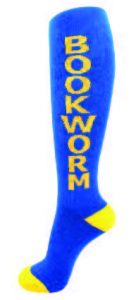 A LEG UP
A LEG UP
The design on these Bookworm Unisex Socks is woven right into the fabric. Available at alwaysfits.com.
 PLAYFUL PLASTERS
PLAYFUL PLASTERS
Archie McPhee’s latex-free Jane Austen Bandages turn “owies“ into teachable moments—and come with a free prize inside!Available at mcphee.com.
 WRAP-AROUND
WRAP-AROUND
The Shakespeare Brass Cuff Bracelet features famous quotes from the legendary playwright. Available at alwaysfits.com.
 BARELY LEGAL
BARELY LEGAL
The Banned Book Bracelet by Carolyn Forsman is a true conversation piece. Available at loc.gov/shop.
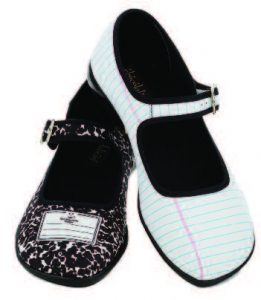 COMPOSING ROOM
COMPOSING ROOM
Shoes of Note flats turn those dreaded composition notebooks from junior high into an adult fashion statement. Available at modcloth.com.
 PAGE TURNER
PAGE TURNER
Luciana Frigerio transforms hardcovers into Folded Book sculptural works of art. Available at lucianapaper.com.
 GREAT OUTDOORS
GREAT OUTDOORS
The Fully Booked Tent can accommodate two campers and is built to withstand Tempest conditions. Available at fieldcandy.com.
 O TRUE APOTHECARY!
O TRUE APOTHECARY!
The Shakespeare Pill Box by Unemployed Philosophers Guild features one of the Bard’s better quips about the medical profession. Available at philosophersguild.com.
 GOING PUBLIC
GOING PUBLIC
The New York Public Library marble Lion Bookends celebrate one of the literary world’s most iconic Beaux Art works of art. Available at nytstore.com.
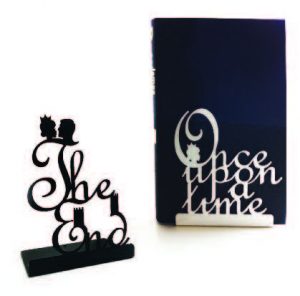 COVER TO COVER
COVER TO COVER
Heather Alston designed these metal Fairy Tale Bookends, which feature hand-cut silhouettes of a prince, princess and castle. Available at notonthehighstreet.com.
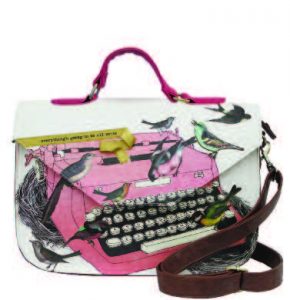 ALL KEYED UP
ALL KEYED UP
Laptops may have replaced trusty Smith-Coronas, but their spirit lives on in the Typewriter Satchel. Available at theliterarygiftcompany.com.

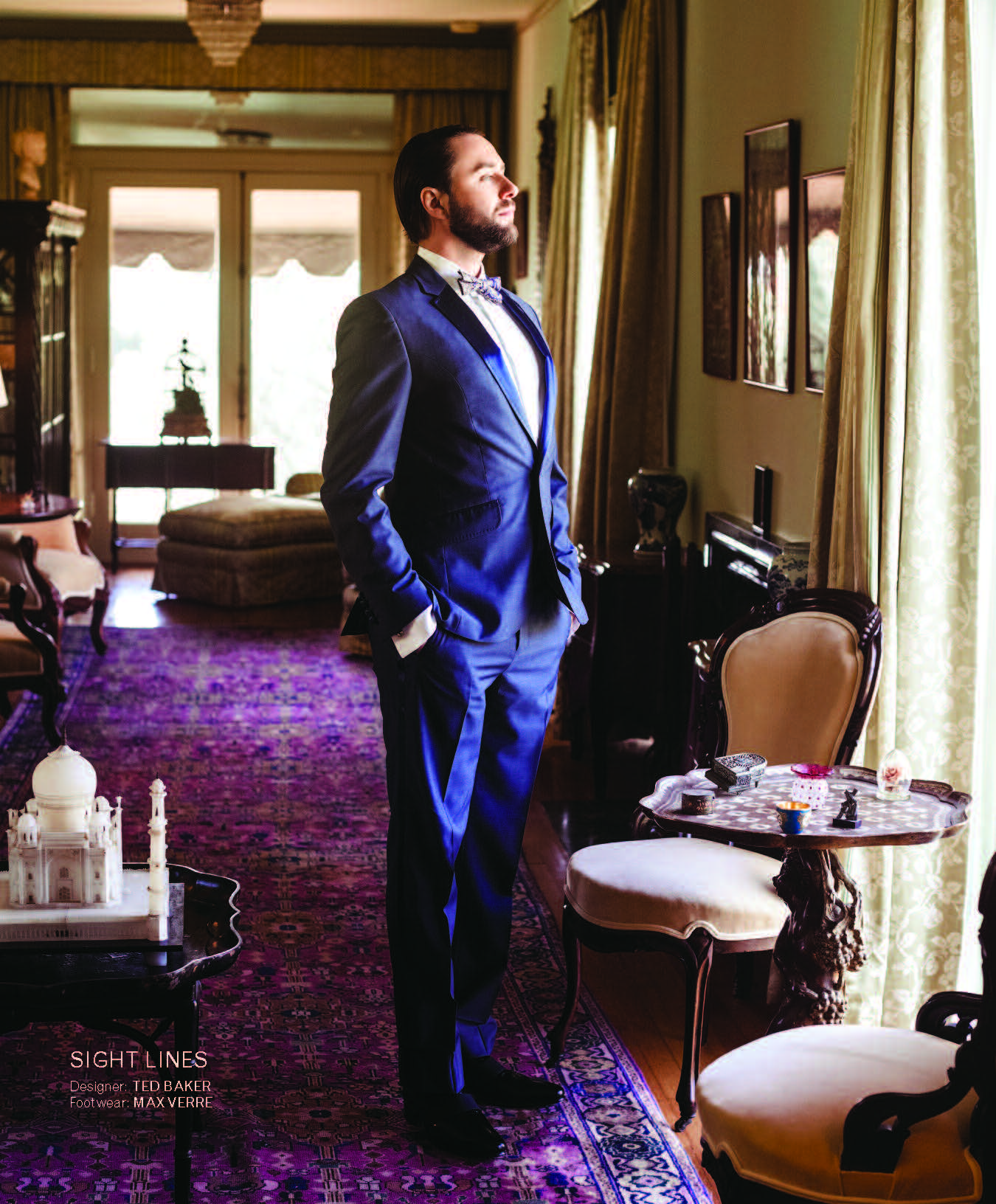
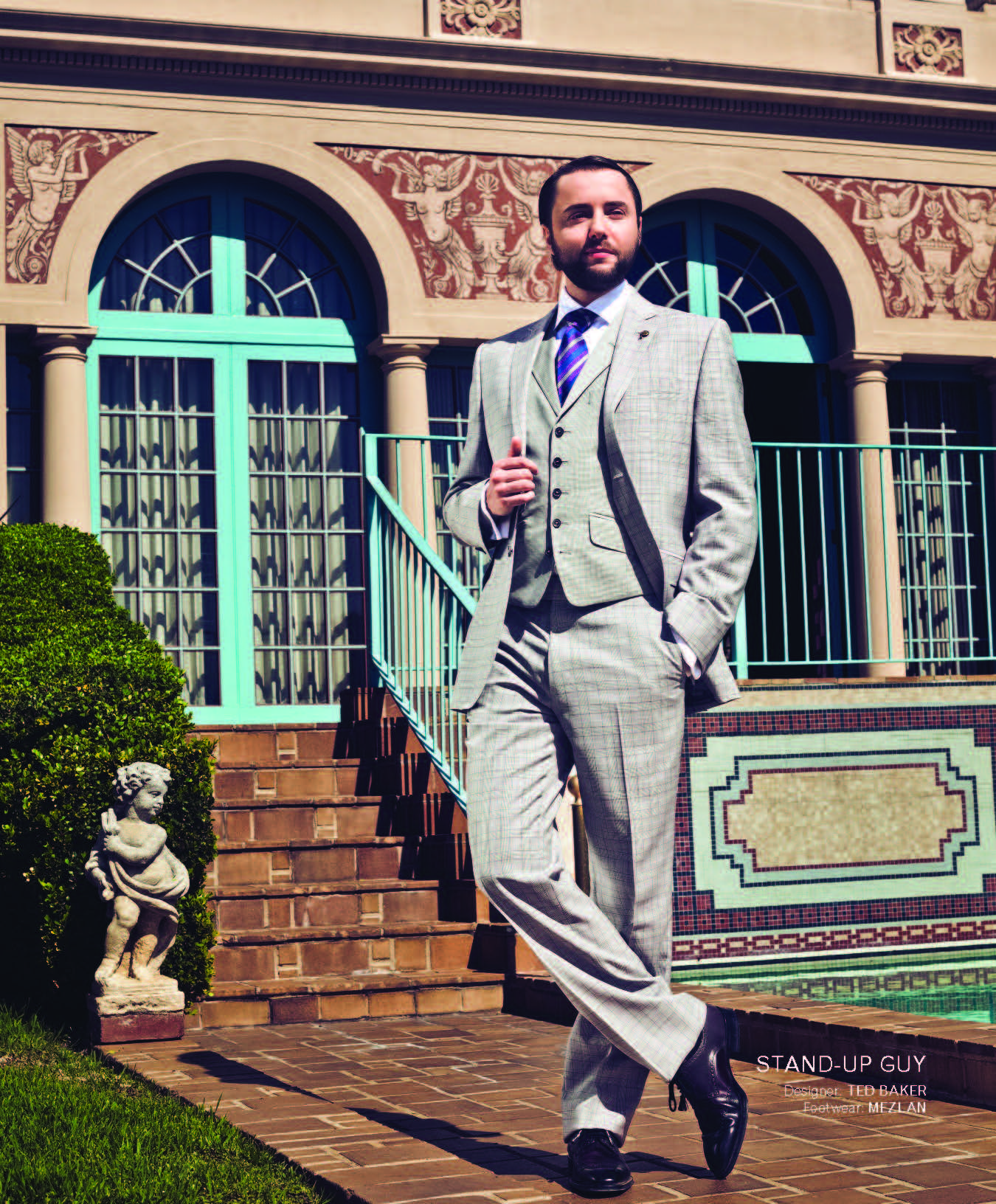


Growing Pains?
Maybe not. A look at the cost of LBP in kids.
What is the leading cause of disability in the world today? The answer, according to the World Health Organization’s 2010 Global Burden of Disease study, is low back pain (LBP). LBP is defined as pain in the area on the posterior aspect of the body, from the lower margin of the twelfth ribs to the lower gluteal folds, with or without pain referred into one or both lower limbs that lasts for at least one day. The common image of an LBP sufferer is a hard-laboring adult, or a senior citizen, but the fact is that low back pain in children and adolescents is a significant health problem, too.
As Dr. Naomi Betesh points out, in children and teens, back pain increases with age. And because LBP in adolescents leads to increased risk of recurrence in adulthood, physicians are realizing the importance of early detection and treatment in the pediatric population.
“Patients, whether adult or pediatric, have the best outcomes with a multidisciplinary treatment approach,” explains Dr. Betesh, a pain management and rehabilitation specialist at Union County Orthopedic Group in Linden and Clark. “Treatment strategies include core strengthening, postural training, proper biomechanics education, medication management and minimally invasive procedures.”
The 2010 WHO study, which was released in March 2014, concluded that LBP causes more global disability than any other condition. With the planet’s aging population, the report stated, “there is an urgent need for further research to better understand LBP across different settings.”
LBP: DID YOU KNOW?
- The annual bill for chronic pain in America, which includes healthcare costs plus lost productivity, is more than $600 billion.
- More than 15% of that cost is related to lower back pain.
- In 2014, 1 in 34 Americans will lose two weeks or more in productivity to LBP.
- Only one-third of the annual cost of LBP in America is related to healthcare; lost wages and diminished productivity accounts for the remaining two-thirds.
Editor’s Note: The above statistics were part of a 2013 study that included information sourced from the CDC, the Center for Medicare & Medicaid Services and the U.S. Bureau of Labor Statistics.
 MAKING STRIDES IN WESTFIELD
MAKING STRIDES IN WESTFIELD
The EDGE Magazine crew—Rob Rubilla, Jeff Shanes, Doug Harris and Jama Bowman—man the Trinitas booth at the 13th Annual Downtown Westfield 5K & Pizza Extravaganza in July. Around 2,700 runners crossed the finish line moments before the skies opened up for a group cool-down. Trinitas was a Platinum Sponsor of the 5K. EMTs Jose Caba, Angela Boyd & Jon Abello led the runners off the start line in a Trinitas ambulance. Harris, Vice President of Marketing and Public Relations at Trinitas, presented awards to the top finishers along with Sherry Cronin, president of the Downtown Westfield Corporation.
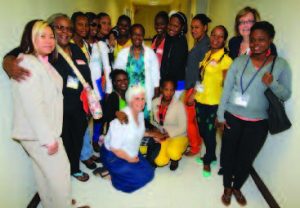 WIDE WORLD OF NURSING
WIDE WORLD OF NURSING
Two faculty mem-bers and 12 nursing students from the University of Notre Dame in Jacmel, Haiti, spent two weeks with faculty and students at the Trinitas School of Nursing. The College of St. Elizabeth and the Sisters of Charity of St. Elizabeth joined the School of Nursing in hosting the program , which included classes and opportunities to improve their nursing skills by treating patients in the simulation lab. Bilin-gual faculty members and student “buddies” from the School of Nursing communicated with the students in Creole, and con-tributed to their immersion in U.S. nursing practices.
 TRINITAS CIO NAMED CHAIR OF JERSEY HEALTH CONNECT
TRINITAS CIO NAMED CHAIR OF JERSEY HEALTH CONNECT
Jersey Health Connect has named Judy Comitto chairperson of its board of directors. Comitto is Vice President of Information Technology at Trinitas and Chief Information Officer. Jersey Health Connect—the state’s largest health information organization—offers a comprehensive network of 29 health systems and hospitals, over 3,500 clinicians, and long-term and post-acute care facilities.
 CAPED CRUSADERS
CAPED CRUSADERS
Children visiting the Trinitas Family Health Center were transformed into superheroes recently, courtesy of employees and interns at Verizon. Verizon supplied dozens of capes to Trinitas as part of a nation-wide program that brings cheer to children undergoing medical care. Two-year old Walter Garay, and his sisters Yartiza (center) age 5 and Melissa, age 7, show off their colorful capes to mom Lisseth (left) and Teresa Andrews, Clinical Coordinator, Pediatric Health Center.
The Garden State is fertile ground for heritage roses.
When Stephen Scanniello’s Great-Aunt Helen heard of his new role as a Rosarian, she sighed in relief that at least one member of the family had not strayed from the Catholic faith. Helen despaired for the souls of Stephen’s parents and six siblings. Not only had the Scanniellos left the Catholic Church and became devout Protestants (in reaction, he says, to a fall-out with a stern school nun); his father had taken on a second job at the local temple, where the kids spent every Friday night helping him in his custodial duties. Little did Helen know that the title Rosarian referred to Stephen’s job as curator of roses at the Brooklyn Botanical Garden.

Photo courtesy of Stephen Scanniello
Today, Stephen Scanniello (right) is one of the top rosarians in the world.
While Gertrude Stein may have dismissed “A rose is a rose is a rose,” when Scanniello discusses heritage roses, he addresses each rose’s special, individual qualities and growing temperament as though it were a quirky, beloved member of his family (not unlike Great-Aunt Helen). In fact, Stephen’s first memories of roses can be traced to his Uncle Joe, an official rose tester for the Jackson/Perkins Rose Catalogue and his Aunt Joanne. Like clockwork, Joe and Joanne would prune their Blaze roses every St. Patrick’s Day, and then smear all the cuts with blazing red lipstick as a sealer to keep insects and larvae out. By the 4th of July, their garden was ablaze with magnificent, patriotic red roses.
Scanniello never dreamed of becoming a rosarian while growing up in the Bergen County town of River Edge. He practically stumbled into it. After majoring in biology and working in a medical lab (which he claims was “fascinating for a week”), he was asked to photograph the lab experiments. The lab recommended he take a course in photography, where he met some BBG (short for Brooklyn Botanical Garden) employees. That led to a job in the BBG education department, after which he became a general gardener for a year. When the BBG’s rosarian retired and his successor lasted only a year, Scanniello won the job and worked there for 17 years.
Now Scanniello is curator of the Peggy Rockefeller Rose Garden at the New York Botanical Garden in the Bronx. The reach of his influence, knowledge and involvement in heritage roses spans the world. I first heard about his work when he ran a hands-on heritage rose propagation workshop for a local garden club, propagating roses from cuttings from a 19th century rose bush. In 2009, Scanniello won the Great Rosarian of the World Award. He also is President of the Heritage Rose Foundation, where he encourages a down-to-earth approach to preserving and propagating heritage roses. Loosely defined, a heritage rose is one with origins that can be traced back to the mid-1800s, before the advent of the hybrid varieties that are common today.
 His thumbprints are on projects ranging from a rambling rose garden in Bellingham, Washington and a rose garden and propagation program on the Frank Lloyd Wright-designed Southern Florida College campus, to a vast heritage rose collection in Chambersville, Texas and a children’s plant workshop a bit closer to home, in Harlem.
His thumbprints are on projects ranging from a rambling rose garden in Bellingham, Washington and a rose garden and propagation program on the Frank Lloyd Wright-designed Southern Florida College campus, to a vast heritage rose collection in Chambersville, Texas and a children’s plant workshop a bit closer to home, in Harlem.
 With the influx of genetically engineered roses, Scanniello’s approach to heritage roses is almost like a spiritual calling. “Rosarians have a responsibility to preserve species roses and their oldest known hybrids,” he explains. “Modern-day rose hybridizers are turning to these oldest roses for the key to creating healthy roses. Without the preservation of species and old roses, a valuable genetic link to disease resistance will be lost.”
With the influx of genetically engineered roses, Scanniello’s approach to heritage roses is almost like a spiritual calling. “Rosarians have a responsibility to preserve species roses and their oldest known hybrids,” he explains. “Modern-day rose hybridizers are turning to these oldest roses for the key to creating healthy roses. Without the preservation of species and old roses, a valuable genetic link to disease resistance will be lost.”
 The author of seven books on roses, Scanniello approaches his subject like a detective. His mission to find and preserve roses spans the world and is a bit of a race against time, as uneducated gardeners are planting newer breeds and eschewing the older roses. It is a mission that often leads him to some unexpected places. One source, for example, was discovered in East Germany, behind the former Iron Curtain. Sangerhausen Rose Garden—a time-warp, hermetically-sealed garden—had remained untouched from before World War II, offering healthy roses that had escaped the heavy-handed adulterations of modern-day hybridizers. Another fruitful, if macabre, source of heritage roses are old cemeteries. There, like ghosts surrounding old, unkempt graves, grow some of the best examples of heritage roses from another era.
The author of seven books on roses, Scanniello approaches his subject like a detective. His mission to find and preserve roses spans the world and is a bit of a race against time, as uneducated gardeners are planting newer breeds and eschewing the older roses. It is a mission that often leads him to some unexpected places. One source, for example, was discovered in East Germany, behind the former Iron Curtain. Sangerhausen Rose Garden—a time-warp, hermetically-sealed garden—had remained untouched from before World War II, offering healthy roses that had escaped the heavy-handed adulterations of modern-day hybridizers. Another fruitful, if macabre, source of heritage roses are old cemeteries. There, like ghosts surrounding old, unkempt graves, grow some of the best examples of heritage roses from another era.
Our own Garden State lives up to its name in this regard. Indeed, it is rich in rose history. Cities including Newark, Elizabeth, Jersey City and Rutherford were home to some of the top rose nurseries in the early 20th century. Prior to that, New Jersey was the primary source for the fresh-cut roses that brightened up the Gilded Age mansions of New York City. Lately, Scanniello—who owns a rose-covered weekend cottage in Barnegat—has been working on designing a new rose garden in a cemetery on the grounds of Christ Church, in Shrewsbury. He also works privately in New Jersey, the Hamptons and on A-list estates.
It’s plain Scanniello loves his job. As we strolled around the Peggy Rockefeller Rose Garden, he introduced me to beautiful, fragrant roses, their histories and peculiarities. Even the roses’ names seemed to evoke a mix of humor and pleasure in Stephen as he rattled off randy rose names—not the least of which are “Blushing Thighs of an Aroused Nymph” and “Spineless Virgin.”
 Starting your own heritage rose garden, Scanniello insists, is not as daunting a task as one might imagine. For starters, he recommends planting a heritage rose in a 24-inch pot or wooden barrel, placed in a location that gets plenty of sun. It should be watered either in the early morning or late afternoon, near the mid-day sun. He encourages New Jersey gardeners to plant roses hailing from New Jersey, such as a pink Jersey Beauty, which was created in South Orange, or South Orange Perfection, or New Dawn, a continually blooming genetic off-shoot of the Dr. van Fleet rose. Other good strains of roses that will bloom continually are the Parade or Dream Girl, bred by Martin Jacobus in Ridgefield in the 1950s and ’60s.
Starting your own heritage rose garden, Scanniello insists, is not as daunting a task as one might imagine. For starters, he recommends planting a heritage rose in a 24-inch pot or wooden barrel, placed in a location that gets plenty of sun. It should be watered either in the early morning or late afternoon, near the mid-day sun. He encourages New Jersey gardeners to plant roses hailing from New Jersey, such as a pink Jersey Beauty, which was created in South Orange, or South Orange Perfection, or New Dawn, a continually blooming genetic off-shoot of the Dr. van Fleet rose. Other good strains of roses that will bloom continually are the Parade or Dream Girl, bred by Martin Jacobus in Ridgefield in the 1950s and ’60s.
As for pruning, Scanniello returns to his roots, advising me to cut back the roses every St. Patrick’s Day. Now to find the right shade of red to seal the cuts!
GETTING STARTED
Stephen Scanniello’s 2006 book A Year of Roses features tips for the suburban rose grower, including…
- Become acquainted with your local rose society. Members love roses and tend to be willing to share their vast knowledge.
- The best way to purchase roses is from mail order catalogs; the quality of the plants is superb, you will find many species you would never find in your local garden center and your dollar stretches far.
- The roses you ordered in January will arrive in April. Plant them shortly after they arrive.
- Prune roses in early March and have all pruning finished by mid-April.
- In the winter, rose bushes look spindly and stark, so when planning your rose garden,
border it with evergreen plant material, such as boxwood, to add structure and winter interest to the garden.
- When in bloom, roses require some care. They need at least five hours of sunlight per day as well as regular watering during late afternoon.
- Roses need a well-drained site with friable soil—soil that breaks up easily and allows roots to thrive and water to pass through easily.
- Weed by hand! Never use weed killers in the rose garden. They damage the roses.
- Deer adore rosebuds. In early June, start protecting the blooms by applying a deer repellent to the rose garden area.
- Whenever possible, purchase roses that grow on their own rootstock and are not grafted on to a different rootstock.
- Some reliable sources for heritage roses with their own rootstock are:
antiqueroseemporium.com
vintagegardens.com
derrosenmeister.com
rosesunlimited.com
Editor’s Note: Sarah Rossbach has written for House & Garden, The Washington Post and Harper’s Bazaar. Among her many books is Feng Shui: The Chinese Art of Placement. She is an author and feng shui consultant who has studied and collaborated with Master Lin Yun, a revered figure in Chinese culture and spirituality. The Peggy Rockefeller Rose Garden, designed in 1916 by landscape architect Beatrix Farrand, features 670 varieties of roses. For directions and hours log onto nybg.org.
In league with an extraordinary gentleman
Photography by Daryl Stone
Prologue
It is the winter of 2006. At a lively (read: heated) meeting of the James Beard Restaurant and Chef Awards Committee, Alan Richman punctuates discussion with zippity-quick one-liners that smack of truth as they provoke laughter. A gavel invariably pounds on the conference room table, demanding order. At one point, Pete Wells, now the restaurant critic for The New York Times, leans over, nods at Richman and whispers to me, “Someone should follow him around with a tape-recorder.”
Eight-and-a-half years later, I finally take that excellent advice. I do so in Alan Richman’s hometown of Somerville, where the most decorated food writer in America’s history was born.
Present
 Alan Richman, restaurant critic for GQ magazine, dean of food journalism and new media at the International Culinary Center in New York, author of the acclaimed book Fork It Over as well as thousands of newspaper and magazine articles, and recipient of the Bronze Star in the Vietnam War, is having lunch at Martino’s Cuban Restaurant on West Main Street in Somerville. It is a hot summer day.
Alan Richman, restaurant critic for GQ magazine, dean of food journalism and new media at the International Culinary Center in New York, author of the acclaimed book Fork It Over as well as thousands of newspaper and magazine articles, and recipient of the Bronze Star in the Vietnam War, is having lunch at Martino’s Cuban Restaurant on West Main Street in Somerville. It is a hot summer day.
“Is this the $4 salad?” Richman asks. “It’d be $40 in New York.”
As he dissects the ingredients, chef-owner Martino Linares (above) comes over to the table to listen in. He personally took, and approved, our order.
“The (iced) tea is nicely composed,” Richman adds. “The lemon is already in it. It usually takes me 15 minutes to get the lemon right.”
Linares beams. “Good, heh?” he says.
“All of this might be as good as you say it is,” Richman replies, waving his arm around the food-laden table. Linares chuckles and hops off to sing “Happy Birthday” at another table.
The incognito restaurant critic continues.
“The two things I’ve always hated are empanadas and tamales. Empanadas are always grotesquely soft. But this one is great. It’s delicate. It’s also crunchy. Look at the crimping around the edges. The sauce is smoky.”
And then: “This tamale, the pork, is really good. You know, the Cubans in Cuba have forgotten how to cook. This is good cooking.”
Linares, birthday song sung, is back for more Richman, and he gets what he wants. “My girlfriend and I were looking for a place to celebrate her birthday. I’ll take her here.”
Alan Richman, 70, recalls flying to Cuba from Miami in a pre-Castro time and “eating coconut ice cream out of a coconut shell.”
“Ah! The best!” Linares, 86 going on 16, exclaims in approval.
“When I was a little boy,” Richman tells Linares, “we’d go to Miami Beach. I always wanted to stay in the Fontainebleau Hotel.”
“I cooked there,” Linares says. He’d first come to the States in 1950, volunteered for the Bay of Pigs invasion in 1961, was captured and spent three years in a Cuban prison. After his release, Linares returned to Miami—and cooked at the Fontainebleau. Thus began his career cooking in big-city French and Italian restaurants in America.
The Cubano arrives, sliced and served jelly roll-style on a platter.
“This is like a Cuban hoagie,” Richman says. “Real roast pork! Look at this thing!
“You know what?” says the man who has won 16 James Beard Awards for his writing on restaurants and food. “I think this is the best restaurant in America.”
Martino Linares does a cross between a jig and a tango as Richman examines the sandwich’s layers.
“This Cubano needs a few more pickles.”
Past-Life Experiences
Richman was born in Somerville in 1944. Though his family moved north to Hillside when he was 5, then subsequently to the Philadelphia suburbs, his grandparents as well as other relatives remained in Somerville. The Richmans visited regularly, which may explain the food critic’s vivid memories of “a wall of comic books in a gas station” near his childhood home on Codington Place.
“It was the Mount Rushmore of comic books. I’d sit there for hours.”
 His grandparents, Rose and Nathan Rabinowitz, belonged to the Orthodox temple in Somerville, where young Richman “sat through services in 107-degree heat.” Though his grandmother “wasn’t a very good cook,” she did make a “fine kuchin.”
His grandparents, Rose and Nathan Rabinowitz, belonged to the Orthodox temple in Somerville, where young Richman “sat through services in 107-degree heat.” Though his grandmother “wasn’t a very good cook,” she did make a “fine kuchin.”
At the time, however, Richman fixated on hot dogs and a certain gumball machine that spat forth, if you were lucky, “rainbow-colored gum. Or something like that.” Richman-the-boy “wanted that rainbow gum because, with that, you also got a candy bar.”
From his home base on Codington Place, Richman would go with his grandmother to the old Cort Theatre (“I saw the most boring movie there—The Quiet Man”) but avoid the Hotel Somerset, whose sign still reigns over part of downtown Somerville. “It gave me the creeps.”
Somerville residents never avoided Raymar’s Center, owned and operated by Richman’s Uncle Sidney until 1976. Now it’s called Redelico’s; owner Randy Redelico worked for Raymar’s. He says that Sidney Raymar taught him “everything I know about paint and decorating.”
While Raymar’s was at its peak, brightening homes in blossoming Somerset County, Alan Richman was a student at the University of Pennsylvania (“Candice Bergen was in my class”). After college, Richman joined the Army and, in 1966, was in the Invasion of the Dominican Republic. In 1969, he was called to service in the Vietnam War.
“I was in the world’s largest Army boat company. I used to ride on the Saigon and Dong Nai Rivers, the Mekong Delta.” He claims he “didn’t do anything brave,” though he rose to the rank of captain and was awarded the Bronze Star.
“I loved Vietnam,” he says.
Newspapers were his next stop. Richman became a sports writer (Philadelphia Bulletin), then a sports columnist (Montreal Star, Boston Globe). It was at the Globe that Richman pioneered long-form writing about sports. Sports writers tend to travel to cities where games are played, so Richman started eating in various restaurants in various locales.
By the time he was on staff at The New York Times, he was working on major-league national news stories. “I covered Three Mile Island. I covered the disappearance of Etan Patz.”
Then he went to People magazine, where he was “the first person hired to report and write their own stories,” not merely a hack fashioning an item out of dispatches from correspondents.
“I did a cover story on Oprah Winfrey. I sat in Grace Jones’s living room as she was having a breakup with Dolph Lundgren. I covered the comeback of Vladimir Horowitz in Paris. There was so much money then,” which meant Richman dined well wherever he traveled.
By this time, he was writing about things culinary as a hobby and doing a regular wine column for Esquire magazine. After five years at People, he moved onto GQ.
It wasn’t long before his singular voice in food-writing drew national acclaim.
In 1991, Richman won the very first James Beard Award for food writing. His name has been called out 15 additional times at ceremonies dubbed the “Food Oscars.” There have been numerous additional honors, ranging from citations from the International Association of Culinary Professionals to a National Magazine Award.
His unique combination of wit and wisdom has dominated the culinary world for more than a quarter-century.
Epilogue
Alan Richman doesn’t have a cell phone. Well, he sort of has a cell phone, but it’s “one of those throw-away phones drug dealers use.” He can call you, but you can’t call him, in other words.
He’s explaining this as we take a break from looking for the spot that possibly could’ve been the circa-late-1940s/early ‘50s gas station with the wall of comic books. We’re in another Somerville restaurant, though Richman finds this one as offensive as the cell phone.
“The purpose of cell phones is so people can incon-venience those they are planning to meet,” he says.
Pete Wells was very right.
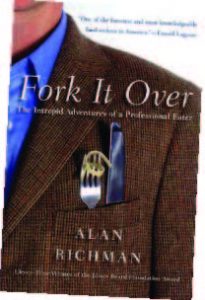 FOR FUTURE REFERENCE
FOR FUTURE REFERENCE
Alan Richman’s work can be seen in GQ, both the print edition and on the web site. For information about his classes at the International Culinary Center in New York, visit internationalculinarycenter.com.
Fork It Over, published in 2004 by HarperCollins, showcases the writer’s range. It’s a little bit memoir, with a whole lot of vintage Richman commentary.
When in Somerville, stop in for lunch or dinner at Martino’s Cuban, 212 West Main Street; 908-722-8602; martinoscuba.com.
What makes a successful restaurant? Food, service, atmosphere, value—all are crucial ingredients in a winning recipe. The true measure of success, however, can be measured in repeat customers. In other words, loyalty is everything. We asked some of the region’s top chefs and restaurant owners what they would recommend to first-time customers that would be most likely to transform them into regulars…
The Black Horse Tavern & Pub • Sliced Buffalo Sirloin
1 West Main St. • Mendham
(963) 543–7300 • blackhorsenj.com
The Black Horse is one of New Jersey’s oldest restaurants, but features contemporary farm-to-table American cuisine. One of our signature dishes is sliced buffalo sirloin. It’s prepared with a blackberry brandy demi-glaze and served with roasted vegetables, lima beans and grilled pita.
— Kevin Felice, 40North Executive Chef
 Café Z • Stuffed Meatball
Café Z • Stuffed Meatball
2333 Morris Ave. • Union
(908) 686–4321 • cafeznj.com
At Café Z, we are always trying new ideas and recipes. Our homemade stuffed meatball is a great example. It started out as a “daily special” and quickly became a crowd favorite. We hand-roll each and every one, bake and serve with our homemade spicy marinara sauce. The concept originated from our Bolognese sauce, a three-meat gravy we serve over pasta with a dollop of seasoned ricotta cheese. Both are simply delicious, always fresh and made on premises.
— Patricia Inghilleri, Owner
 Chestnut Chateau • Pan-Seared Tilefish
Chestnut Chateau • Pan-Seared Tilefish
649 Chestnut Ave. • Union
(908) 964–8696 • www.chestnutchateaunj.com
Our line-caught tilefish comes from the deepest part of the ocean. It is pan-seared and served over broccoli rabe, sautéed in garlic and olive oil, and garnished with diced Kalamata olives and roasted red peppers. It’s one of my favorite dishes and our customers savor every bite—truly, it will make you close your eyes and smile.
— George Niotis, Chef
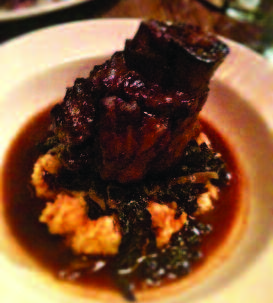 George and Martha’s American Grille • Pork Osso Buco
George and Martha’s American Grille • Pork Osso Buco
67 Morris Street • Morristown
(973) 267–4700 • georgeandmarthas.com
Our regulars at George and Martha’s really feel like they’re home when they order the Pork Osso Buco. It is paired with savory mashed potatoes and crispy fried leeks. Comfort can be cutting-edge if you are innovative in your technique. I enjoy taking familiar flavors and dishes and presenting them in a new and exciting way that surprises my guests.
— Kevin Felice, 40North Executive Chef
 The Manor • Surf & Turf
The Manor • Surf & Turf
111 Prospect Ave. • West Orange
(973) 731–2360 • themanorrestaurant.com
I pair pan-seared prime filet mignon with a butter-braised lobster, along with fresh seasonal vegetable accents, which currently include baby carrots, beets, turnips, haricots verts, and wild mushrooms. An airy shellfish emulsion and the creamiest mashed potatoes you will ever taste make for the perfect partners to this classic dish, which has helped the Manor successfully define the art of fine dining for over a half-century.
— Mario Russo, Executive Chef
 Mario’s Tutto Bene • Vinegar Pork Chops
Mario’s Tutto Bene • Vinegar Pork Chops
495 Chestnut St. • Union
(908) 687–3250 • mariostuttobene.com
Our vinegar pork chops feature three thin-cut Frenched chops that are coated with Italian breadcrumbs and sautéed with sweet vinegar peppers, prosciutto and garlic. They arrive with house-made, roasted or mashed potatoes. Our regulars love this entrée.
— John Garofalo, Owner
 The Office Tavern Grill • Chicken & Waffles
The Office Tavern Grill • Chicken & Waffles
3 South Street • Morristown
(973) 285–0220 • officetaverngrill.com
Our most popular signature dish is the chicken and waffles. The buttermilk fried chicken is served with gruyere and applewood bacon in a maple syrup reduction. The waffle batter is infused with rosemary and thyme with a touch of cayenne pepper and the chicken is crunchy and flavorful. All these flavors—the hearty, sweet and salty—really work together.
— Kevin Felice, 40North Executive Chef
 The Office Beer Bar & Grill • The Wedge Burger
The Office Beer Bar & Grill • The Wedge Burger
411 North Ave. West • Westfield 61 Union Pl. • Summit
728 Thompson Ave. • Bridgewater
619 Bloomfield Ave. • Montclair 1–7 South Ave. • Cranford
32–34 Chestnut St. • Ridgewood
Our newest burger, The Wedge, combines two classics—the hamburger and wedge salad. A half-pound of grilled beef with blue cheese, beefsteak tomato and cheddar cheese sauce—served between two wedges of iceberg lettuce. The idea was developed when we were looking at a gluten-free burger that had a little creativity to it. Now it’s a signature item.
— Kevin Felice, 40North Executive Chef
 Piattino Neighborhood Bistro • Braised Chicken & Linguine
Piattino Neighborhood Bistro • Braised Chicken & Linguine
88 East Main St. • Mendham
(973) 543–0025 • piattinonj.com
Piattino is a Manhattan-style restaurant where we can get creative and adventurous with traditional Italian food. Our braised chicken and linguine, which is prepared with a 24-hour red wine glaze, is a very popular menu item that demonstrates how we prepare Italian ingredients—tomatoes, roasted mushrooms, fresh rosemary and oregano, garlic butter—with an American technique and influence.
— Kevin Felice, 40North Executive Chef
 Publick House • Blackened Scottish Salmon
Publick House • Blackened Scottish Salmon
899 Mountain Ave • Mountainside
(908) 233–2355 • publickhousenj.com
In keeping with our Irish roots, we offer exceptional pub fare. However, we’re best known for our high-quality seafood and meats, including our pan-roasted blackened Scottish Salmon. It’s served with a pine-nut quinoa, and arrives with fresh asparagus, and a creamy carrot purée.
— Bernie Goncalves, Owner
 Rio Rodizio • Roasted Meats
Rio Rodizio • Roasted Meats
2185 Rte. 22 West • Union
(908) 206–0060 • riorodiziounion.com
We offer an “All-You-Can-Eat” dining experience flown straight from the streets of Rio de Janeiro to your tableside—featuring the unique ambiance of a traditional Brazilian Steakhouse. Each customer gets to witness a never-ending parade of freshly roasted meat and poultry. Our authentic Gaucho chefs come to you and carve these melt-in-your-mouth meats to your liking.
— Paul Seabra, Owner
 Thai Amarin • Drunken Noodles
Thai Amarin • Drunken Noodles
201 Morris Ave. • Springfield
(973) 376–6300 • thaiamarinnj.net
We prepare a wide range of authentic Thai food that you can’t find anywhere else. Our regular customers love our Drunken Noodles, a stir-fried broad rice noodle dish with a distinct flavor profile. They are sautéed in our special sweet and spicy garlic basil sauce and topped with fresh holy basil. It pairs really well with our fried cheesecake dessert.
— Amy Thana, Owner
Would you invite Pete Campbell into your home? Maybe a better question is: Could you keep him out? While you think about that, consider the man behind the mask, Vincent Kartheiser, who breathed life into one of Mad Men’s most indelible characters. He has been honing his craft since childhood, in films including Masterminds, Alaska and The Indian In the Cupboard, and later in Another Day In Paradise and Crime and Punishment in Suburbia, for which he received critical acclaim. Kartheiser is also familiar to fans of the WB television series Angel. When Editor-at-Large Tracey Smith sat down with him, she was wondering what all Mad Men fans do: How much of what we see on screen is Vinnie and how much is Pete? So, naturally, she asked…
EDGE: Peter Campbell is manipulative, maniacal, devious, shrewd and success-driven. Is there a little bit of Pete in Vincent Kartheiser?
VK: Is it me? No. But is there a little bit of Peter in Vincent? Yes. I think that if we did a really thorough search and investigation of our history, we would find that we all have those personality traits, either momentarily or in the long term. So, yes, there’s a part of Peter in me. I’m capable of things that aren’t great.
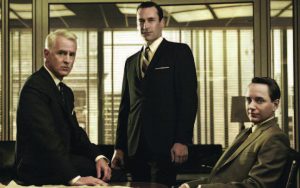
Courtesy of AMC
EDGE: Why do you think Matt Weiner cast you as Pete?
VK: I would like to believe that I fit his vision, that he was looking for somebody who had a certain amount of cockiness and confidence and sliminess, but didn’t really know he had the sliminess. I don’t necessarily have any of those things in real life…but I guess I did in the audition room. (laughs)
EDGE: Thanks, by the way, for doing the fashion shoot for us. Is that fun for you—like a vacation from your everyday wardrobe?
VK: Sometimes. We generally schedule those sorts of things on the weekend. If I’ve had a big week of work, sometimes I have lower energy for such events. And lots of times they put me in stuff that I would never understand how to wear, or hope to wear.
EDGE: On Mad Men, which era of fashion is closer to your taste?
VK: I don’t know. I can’t pull off loud outfits. It doesn’t suit me and I don’t have a great physique, so those really tight pants and those form-fitting shirts aren’t as great as a suit that covers up and makes everyone look relatively similar.
EDGE: You looked great in the Bespoke Couture. Will we be seeing the Vincent Kartheiser collection someday?
VK: No. No we won’t. I know nothing about fashion, nor do I really aspire to. That being said, you know Photoshop is one helluva thing and I’m sure it was utilized. I’m sure a lot of Photoshop is done on my photos!
EDGE: When Season One of Mad Men started shooting, how did you see your character evolving over the years?
VK: You try not to think too far ahead when you’re acting. I do try to think of the past and the present of the character. A character has dreams and hopes and fears, and I do access those, but I tried not to put too many of my own kind of desires into Pete’s character. I didn’t want to put that pressure on myself. I knew what the character wanted in the first season; he wanted to be Don Draper and he wanted to switch out of accounts and be a creative guy. That was something he thought he was more suited to, something that was exciting. I focused on that and I never made too many assumptions of where he’d end up plot-wise.
EDGE: Is Pete Campbell the first character you’ve played that has had to age significantly?
VK: Yeah, because most of the time you play characters—or at least I’ve always played characters—where the timeframe for the experience is very short. It’s one week, or one year, or one day. Very few stories span ten, twenty, thirty years. In the case of Pete, I aged as well, so it worked out.
EDGE: Is there anything about 30-something Peter Campbell you like better than 20-something Peter Campbell?
 VK: There are quite a few things about Peter Campbell that have changed, and I admire them. I think he fits his place in the world and his place in the office. He understands what his role is, what his limitations are, and what his fortés are. In those ways, it makes him an easier person to be around for other people. When a character or a person is always trying to change, or fit a mold that isn’t quite right for them, it’s uncomfortable—not only for them, but for everyone around them. It causes a lot of conflict. So I think it’s wonderful that he’s come to peace with his role in the world, which is to be an account man. At least that’s where he’s settled in. I think his envy and jealousy of people around him has simmered down a bit. He doesn’t need to hate as many people as he used to, which I think is partly due to aging. We all experience that. Because it was such a prominent part of his personality, it’s nice that it’s gone away. He still gets frustrated very easily and feels that nothing ever goes his way, that he’s always getting the short end of the stick, and has a “woe is me” outlook on life—and he still has a sense of entitlement. So not everything has changed. But he has calmed down a bit and stops trying to set fire to everybody around him.
VK: There are quite a few things about Peter Campbell that have changed, and I admire them. I think he fits his place in the world and his place in the office. He understands what his role is, what his limitations are, and what his fortés are. In those ways, it makes him an easier person to be around for other people. When a character or a person is always trying to change, or fit a mold that isn’t quite right for them, it’s uncomfortable—not only for them, but for everyone around them. It causes a lot of conflict. So I think it’s wonderful that he’s come to peace with his role in the world, which is to be an account man. At least that’s where he’s settled in. I think his envy and jealousy of people around him has simmered down a bit. He doesn’t need to hate as many people as he used to, which I think is partly due to aging. We all experience that. Because it was such a prominent part of his personality, it’s nice that it’s gone away. He still gets frustrated very easily and feels that nothing ever goes his way, that he’s always getting the short end of the stick, and has a “woe is me” outlook on life—and he still has a sense of entitlement. So not everything has changed. But he has calmed down a bit and stops trying to set fire to everybody around him.
EDGE: What is the value of a Pete Campbell to an ad agency?
VK: I think his value is obvious. He’s a good account man, he works hard, he has ambition, he has loyalty to the people around him and to the company, he’s not afraid to get his hands dirty—he’s not afraid to get his name dirty—and he’s not afraid to use everything in his arsenal to get the job done. He used the death of his father to get an account, he convinced Joan to spend the night with Herb Bennet to land Jaguar, and he is willing to go pretty far into a moral shadow. I don’t think it’s good for the world, but it does bring value to the agency. Actually, I have a hard time calling those things “value” because they’re unscrupulous. Unfortunately, that’s a part of the business world. I don’t think that all companies run their businesses that way, but some certainly do, and in those businesses there are people like Pete Campbell that drive the train, and it accomplishes something.
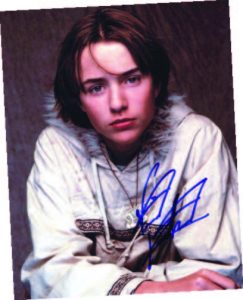
Upper Case Editorial Services
EDGE: What’s it like playing a character that many viewers love to hate?
VK: I’m just the actor. The people who really created this character and did the work are the writers. In that writer’s room, we have people who have been agents, who have been advertisers. We have people who are still in advertising who consult, and we have a team of people who spend hours and hours doing research on the time, on the year, on the date, on products, on ad campaigns, on the types of people and the types of stories. Matthew Weiner and the writing team take all of this info and create these characters. I think it’s an honor that I haven’t ruined what they are trying to do—but it’s really that I’m just a vessel, and they really are owed the credit. By the way, you’re right. I get this all the time, people come up and say, “I work with a Pete Campbell.” They did a really good job of writing him in a realistic way, but still in a melodramatic way.
EDGE: Looking back, would you have written your character any differently?
VK: I wouldn’t have written anything differently. I’m very happy with everything they’ve given me. I’m honored that they’ve written what they’ve written. I don’t really live in a world of what-ifs. It gets too complicated.
EDGE: Pete says to Don Draper in an early episode, “A man like you, I’d follow into combat blindfolded.” Would you, Vincent, follow Jon Hamm into battle blindfolded?
VK: Well I wouldn’t follow anyone into battle. (laughs) I do feel he has my back. I think I can speak for all the actors that Jon is so supportive and is so consistent, he’s always giving 100 percent, he’s always present, he’s always good. I have off-days—there are days I can’t remember my lines or I’m struggling. Jon and many of the actors I work with are so, so strong. Jon is there so much and it’s Don’s story, so it is pivotal that he supplies his presence. Yet he does it almost effortlessly and I don’t know how. It’s a character trait that I admire greatly.
EDGE: There’s a lot of smoking and drinking on Mad Men, which is period-appropriate. But what are we to make of Pete’s food choices?
VK: He’s always eating childish food, like peanut butter and jelly sandwiches and Cap’n Crunch. I think Matthew is making a statement about this boy-man that Pete is—which is something that I can relate to. There’s something about being an actor, especially from when you’re very young. I’ve never had another job, I’ve had a very blessed life, I haven’t had to roughen up my hands too much. I think there’s something about being an actor, particularly though, that keeps you a little bit childish. It’s make-believe, it’s imagination, and I might be guilty of being a boy-man in some ways.
EDGE: I know you’re a fan of Jack Kerouac. He wrote that “The only people for me are the mad ones, the ones who are mad to live, mad to talk, mad to be saved, desirous of everything at the same time, the ones who never yawn or say a commonplace thing, but burn, burn, burn like fabulous yellow roman candles exploding like spiders across the stars.” Who are Peter Campbell’s people?
VK: The man who never grew old enough to understand what he wrote! I think you start yawning when you hit a certain age and Jack never got to that age. Who are Pete’s kinds of people? New Yorkers. Not the “new” New Yorkers, not the hippies that are taking over the Village in the late 60’s, or the drug dealers in the boroughs or any of those sorts of things, but the “old” New Yorkers. I would say his kinds of people are the logical ones, the ones that he can understand why they do what they do. They don’t get off-course, they stay the course. I think that statement by Jack Kerouac, he’s really just talking about himself. He’s saying the kinds of people I like are like me. So, the kinds of people that Pete Campbell likes—if we’re using that template—are the kinds of people like Pete.

Photo by Michael Yarish courtesy of AMC
EDGE: And who are Vincent’s kind of people?
VK: Personally, as Vincent, I like quiet people…and I wish I were one. (laughs) I like people who think about what they say before they say it. I wish I were one of them, too! I like kind people, gentle people, people who aren’t out for number-one, people who are out for everyone—people who don’t jump to judgment but try to empathize. I’m not really any of those things, and I’m not talking about some crazy-eyed cult. I’m just talking about someone that is real, someone who really sees that their needs aren’t the needs of everyone. That their life isn’t any more important than anyone’s. I don’t know, maybe there’s no one like that in the world, but I feel like I meet them all the time.
Editor’s Note: The only question Vincent Kartheiser dodged in this interview was about his girlfriend, Alexis (Gilmore Girls) Bledel. Now we know why. Vincent and Alex tied the knot over the summer in a secret ceremony. Log onto edgemagonline.com to read more about Vincent’s other television and film roles, and how he kept the EDGE crew loose on his fashion shoot.
When Princeton-educated F. Scott Fitzgerald wrote that there are no second acts in American lives, it is unlikely he imagined someone like Yale-educated Harry Hamlin. Like the figment of a talent agent’s imagination, Hamlin arrived on the entertainment scene in the late 1970s with a killer combination of easy charm, classic good looks, impeccable stage training and a knack for making parts his own. After reaching the apex of his profession in the 1980s, he backed out of the spotlight to raise his family. When Hamlin decided to get back into the game, his timing couldn’t have been better. Yet, as Editor-at-Large Tracey Smith discovered, when it came to landing the role of Jim Cutler in Mad Men, timing wasn’t everything.
EDGE: In 2014–15, you are a cast member of Mad Men and Shameless. They are wildly different shows. Are they wildly different sets?
HH: No. They’re both extremely professional. John Wells and Matt Weiner are two of the most accomplished and professional writer/show-runners that have ever existed. So you can imagine that everything is extremely well thought- out on both sets. There are very few differences, other than the fact that on the Shameless set you’re not allowed to have any sides. Sides are small versions of the script that are handed out every day, kind of a crib sheet for the actors. John Wells doesn’t permit them; he demands that the actors know all of their lines in advance. Normally, the sides are right there in your dressing room and you look at them to find out what scene you’re doing first and what the order of the scenes is, and what words you may need to brush up on. In the car on the way over to the set from the studio, Emmy Rossum said, “You’d better know your lines—if you don’t, you’re in deep trouble with John Wells and he’ll never hire you again!” (laughs) So, it’s a good thing I knew my lines.
EDGE: How did your casting experience compare on the two shows?
HH: For Shameless, I was offered the role and didn’t need to read for it, or even meet John Wells. He obviously knew who I was. Matt Weiner has a policy where he meets everybody that comes on the show, and reads everybody that comes on the show. But he normally doesn’t cast anyone who has a profile. He likes actors to be somewhat known, but not really, really well known. In my case, there have been times in my career when I have been really, really well known, but not so much lately, because I took some time off to raise my kids. Anyway, I was surprised to get the call from my agent to go in and meet Matt and read for a part they called “Swinger Boss” for Mad Men. They told me it would be a one- or two-episode part. I was a fan of Matt’s, and I loved the show, so I agreed to go in.
EDGE: But Matt obviously knew who you were.
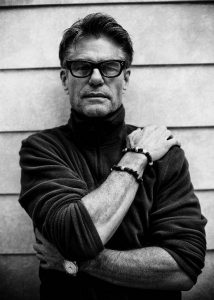
Photo by Eiske Photography
HH: Yes. The casting directors told me later that they had to spirit me into the room by putting a fake name on the docket for Matt, because they wanted him to see me for this part—but they knew that if he saw my name on the docket he probably would say, “Wait a minute, what’s he doing here? I don’t see guys who are well known.” So as soon as I walked through the door, there wasn’t much Matt could do but say, “Oh. Hi. How are you? Welcome and let’s read the part.” So I read for the part…and didn’t get it. I was disappointed, because I wanted to work on Mad Men. But a few months later, they called and offered me another part. They didn’t tell me it was Jim Cutler. They said it might go for two episodes, but definitely one. Once again, I said to myself, Well, I don’t really do just one episode, but then [my wife] Lisa said, “Come on! It’s Mad Men! You should go in and do it…maybe you could get Jon Hamm’s autograph!” (laughs) So I did. I went in, got the part, and it expanded and became what it has become now.
EDGE: Cutler seems like a deep pool, a pragmatist who plays everything close to the vest. What do you like about that part?
HH: I like that he’s quirky. It’s a chance to play a character that’s somewhat eccentric or a little bit off. I saw Jim being at somewhat of an angle to reality—not exactly a right angle to reality, but maybe thirty degrees off. In my opinion, he has potentially another secret life that has not been revealed. They gave me a lot of latitude to create the character that I wanted to create. I had to say the words they gave me, but when it came to my behavior, they kind of let me loose.
EDGE: Do we see any Harry Hamlin in Jim Cutler?
HH: No. The rhythm and how he holds his body, I don’t do that at all in life. I actually used my 10th Grade Latin teacher as a kind of a template. I remember him being pretty tightly wound.
EDGE: How would you characterize the quality of the writing on Mad Men?
HH: Every single word is well thought out—the choice of every comma, every single nuance of the language. There’s nothing there by accident, and there’s nothing there that hasn’t been embedded over and over again to make sure that the cadence that the actors deliver is exactly the cadence that they want to hear. Oftentimes, narrative dialogue is very right-on-the-money; it’s not how people actually speak. In Mad Men, they have integrated spontaneity into the dialogue.
EDGE: You mentioned taking time off to raise your children. What was behind that decision?
HH: I deliberately stepped back from the business when my new flock of kids was born. The hours that we keep on TV shows just do not jibe with raising a family, and with films you’re going on location all the time. It was the late 1990s and the business essentially left L.A. right about the same time the kids were born. You’ll recall that the Canadian dollar went way down, and incentives began to be put into place in different states; Hollywood ceased to be Hollywood about fifteen years ago. When that happened, I said to Lisa, “I’m going to keep working, but I’m only going to work here in L.A. because I want to put these kids to bed every night. We’re going to have to figure out a way to make ends meet and make our lives work with that arrangement.” I already had a son and didn’t get a chance to spend any time with him, because he grew up in Rome and I was working all the time. I was devastated by that, and am to this day. You don’t want to have kids and not be there with them growing up. The most important thing in life is the legacy one leaves with their children. The ability to raise a solid family and be part of it, I think, is the greatest effort that we can make in life. So, I just said, “You know what? We’ll figure something out. I’ll write a book or I’ll do some reality TV, or we’ll do whatever is required to stay in town so that we can put our kids to bed every night.”
EDGE: And it worked.
HH: It did. We were able to do it. Lisa and I both worked and kept the fire going. Then, when the kids were old enough, around 13 or 14, I said, “It’s time now for me to go back to work.” I called my agent and said, “Let’s see what we can find.” Veronica Mars shot here, so I could do that. Army Wives shot in South Carolina. By then, though, I could leave for a while. Curb Your Enthusiasm came up and that was a lucky stroke. Then Shameless came up and people liked that, and then I got Mad Men. I have been very fortunate that things have worked out as well as they have.
EDGE: Final question…Perseus 1981 or Perseus 2010—which Clash of the Titans am I renting tonight?
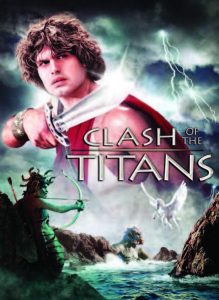
Warner Bros
HH: Well it had better be 1981! (laughs) Little known fact about Clash of the Titans that Matt Weiner revealed to me on my first day working on Mad Men. They were in the process of casting Jim Cutler and Matt’s 13-year-old son was having a bunch of guys over for a sleepover birthday party. He told his son he could rent any movie he wanted and watch it in the screening room, and his son picked my version of Clash of the Titans. Matt said, “You were on my mind two weeks ago when my son asked to have this movie screened at the house.” That’s 30-some years after this film was made. That a kid would still ask to have that movie screened at his birthday party, I was amazed by that. I don’t know whether that had anything to do with his decision to cast me for the role, but that was something he told me my first day working with him.
EDGE: What do you recall about Clash of the Titans?
HH: Well, we kind of skewered the mythology a little bit. At Yale, I wrote my thesis on Myth and Drama. When I got the script for Clash of the Titans many years later, I noticed that the story was all screwed up. Perseus never rode a Pegasus in the original myth. Also, about three-quarters of the way through filming in Malta, they informed me that I would not be cutting off Medusa’s head with a sword. They had been told by the studio in London that the movie might get an X rating for violence, so I couldn’t do it. I said, “If that’s the case, you’re going to have to find somebody else to finish the movie because I’m going back to Los Angeles tonight.” They totally freaked out. They locked me in my trailer and unplugged the electricity. I still refused to do the shot. “You’ve screwed up the mythology so much in this movie—and now you want me to cut Medusa’s head off with my shield? Like a Frisbee? I’m not gonna do it!”
EDGE: You won that one.
HH: Yes, I did.
Editor’s Note: Tracey Smith took Harry Hamlin back to his days as a teenager and 20-something, and also quizzed him on his starring role on L.A. Law. Log onto edgemagonline.com to read more of their Q&A.

